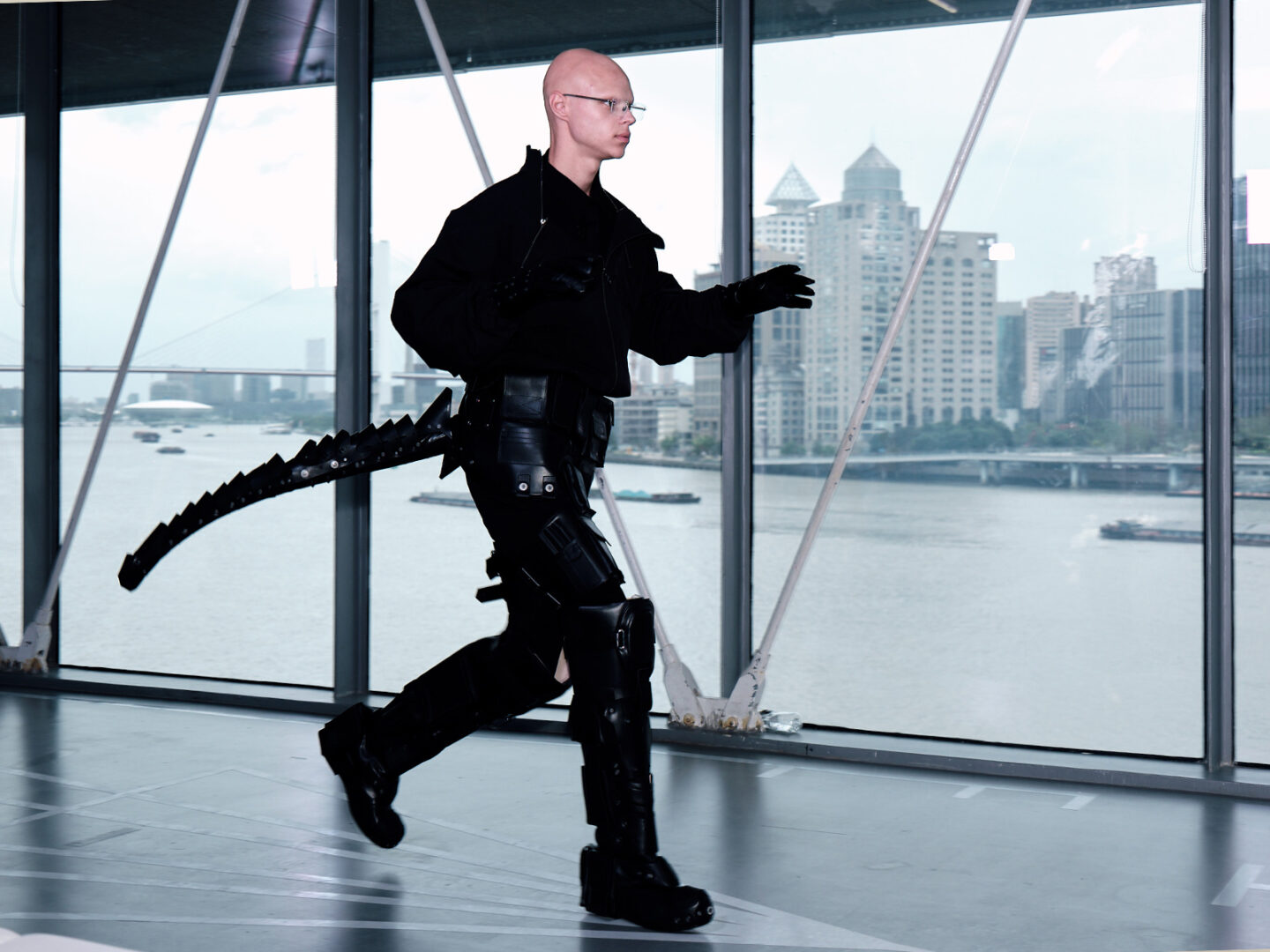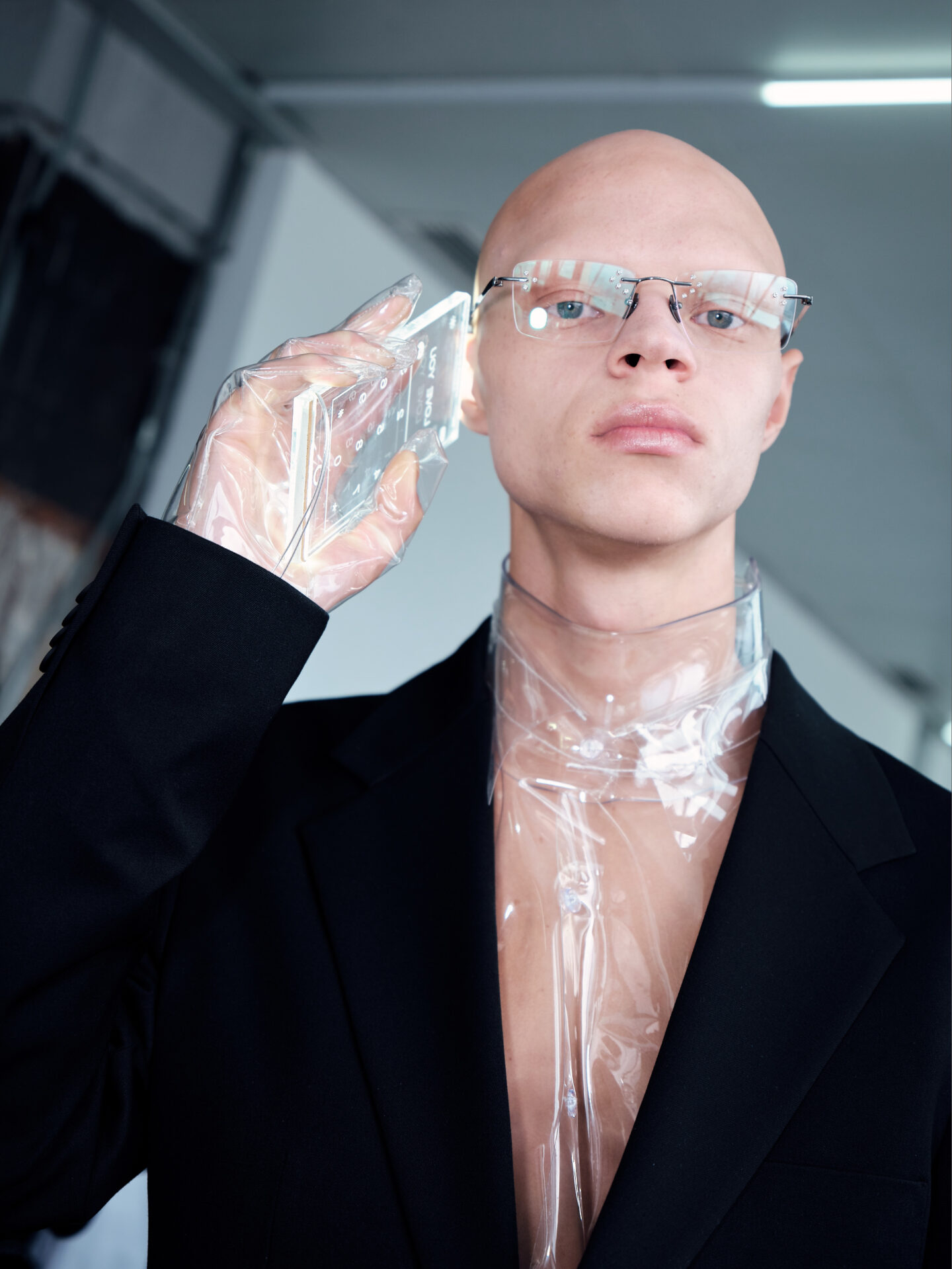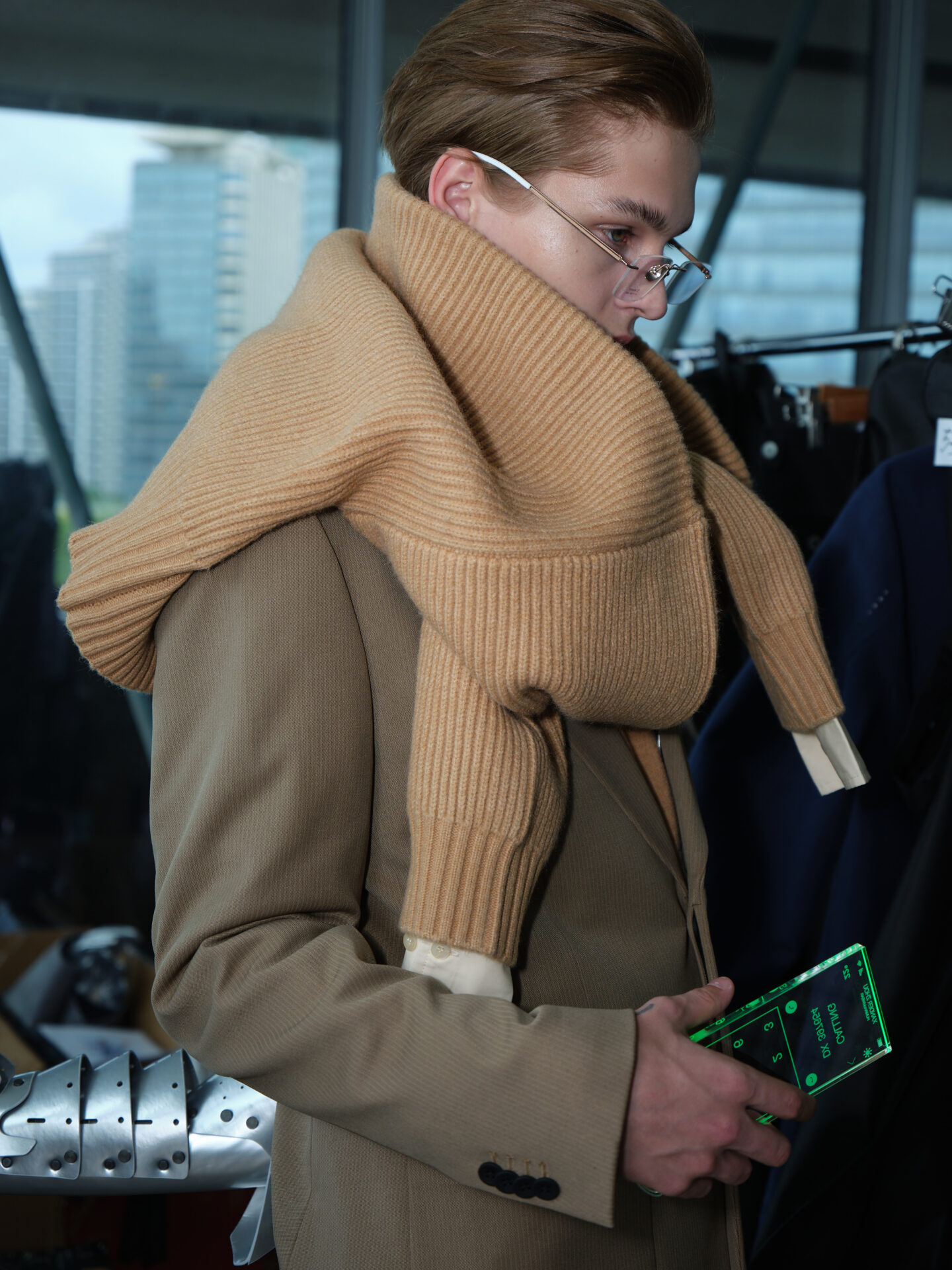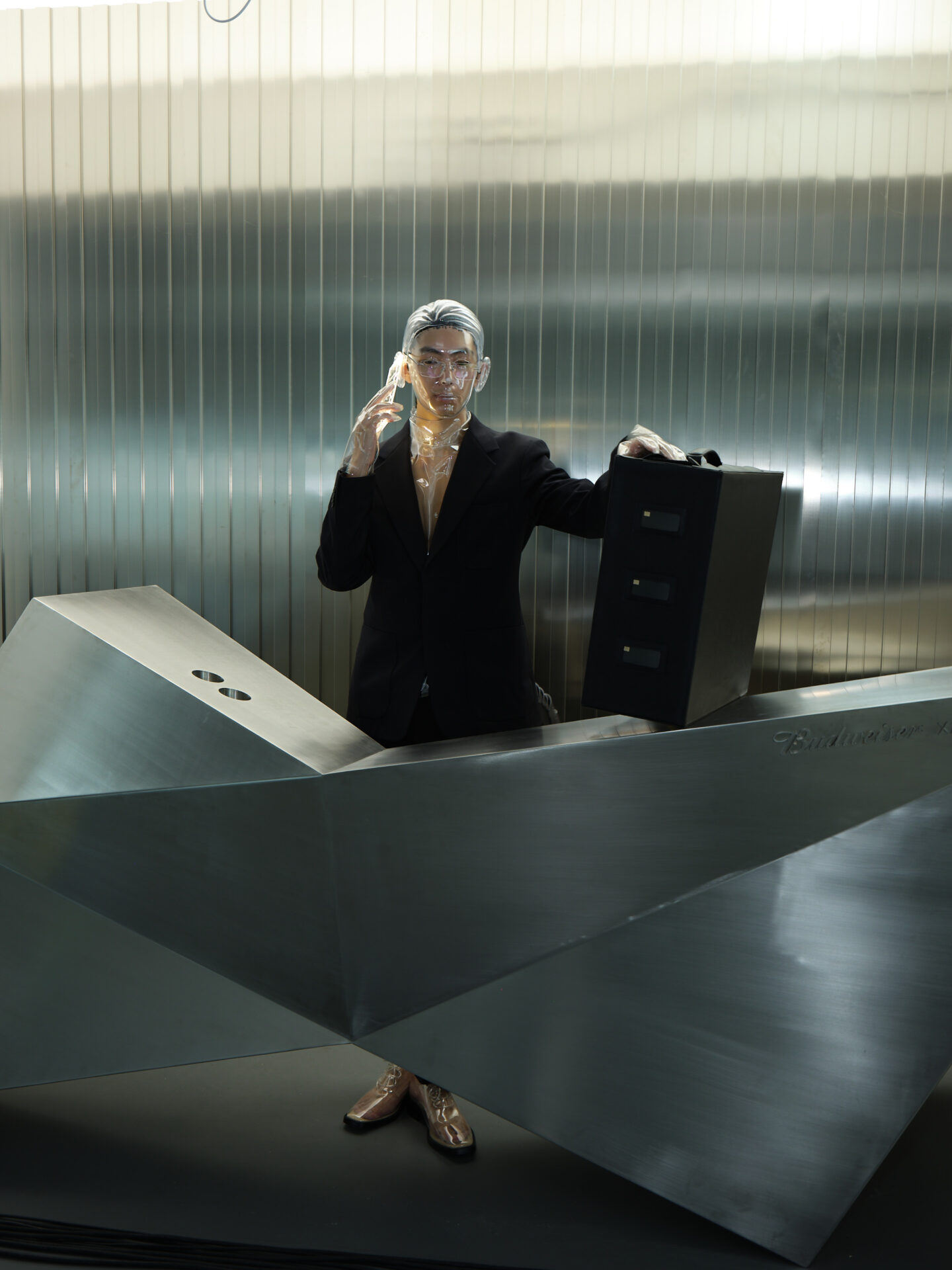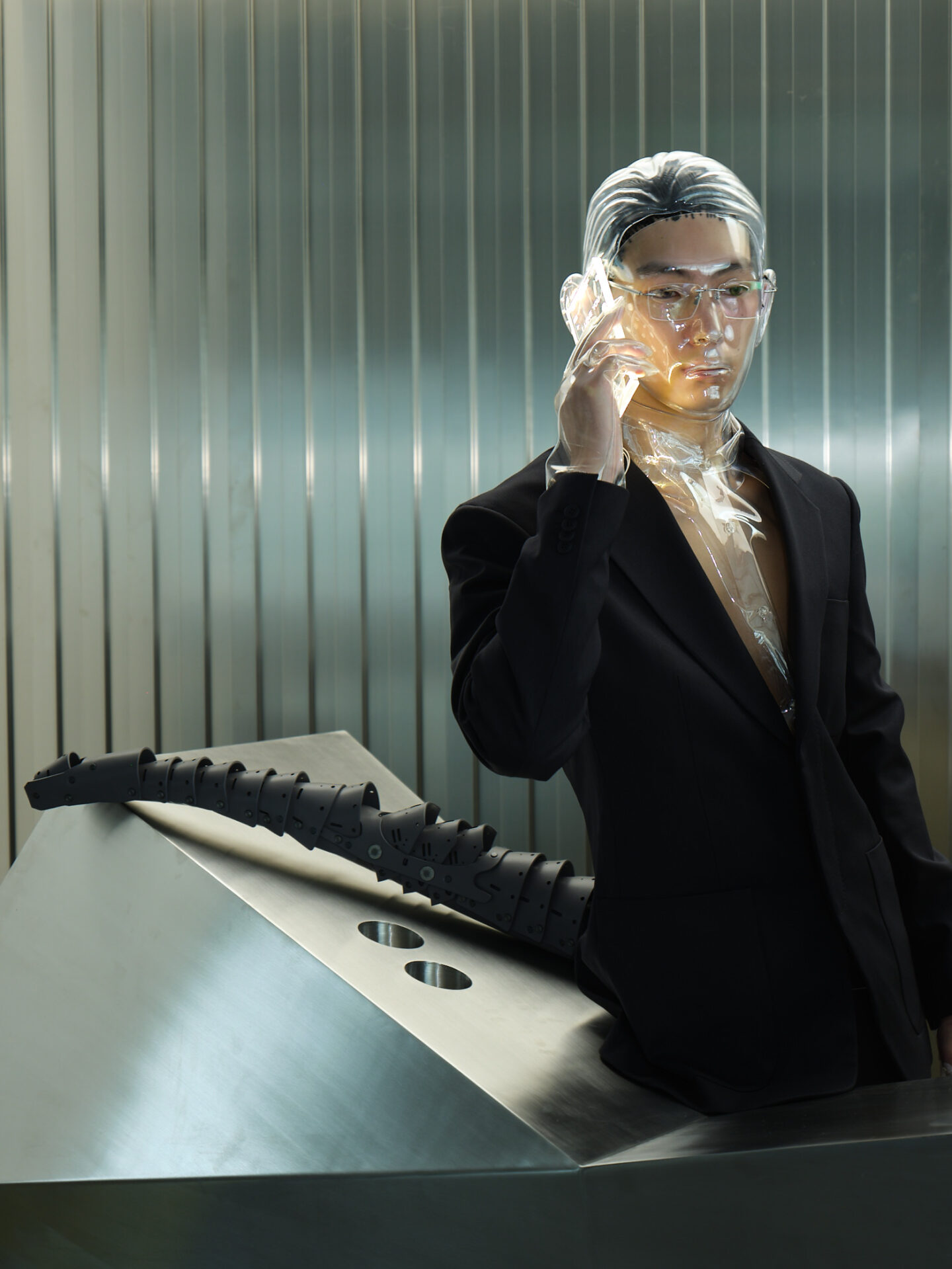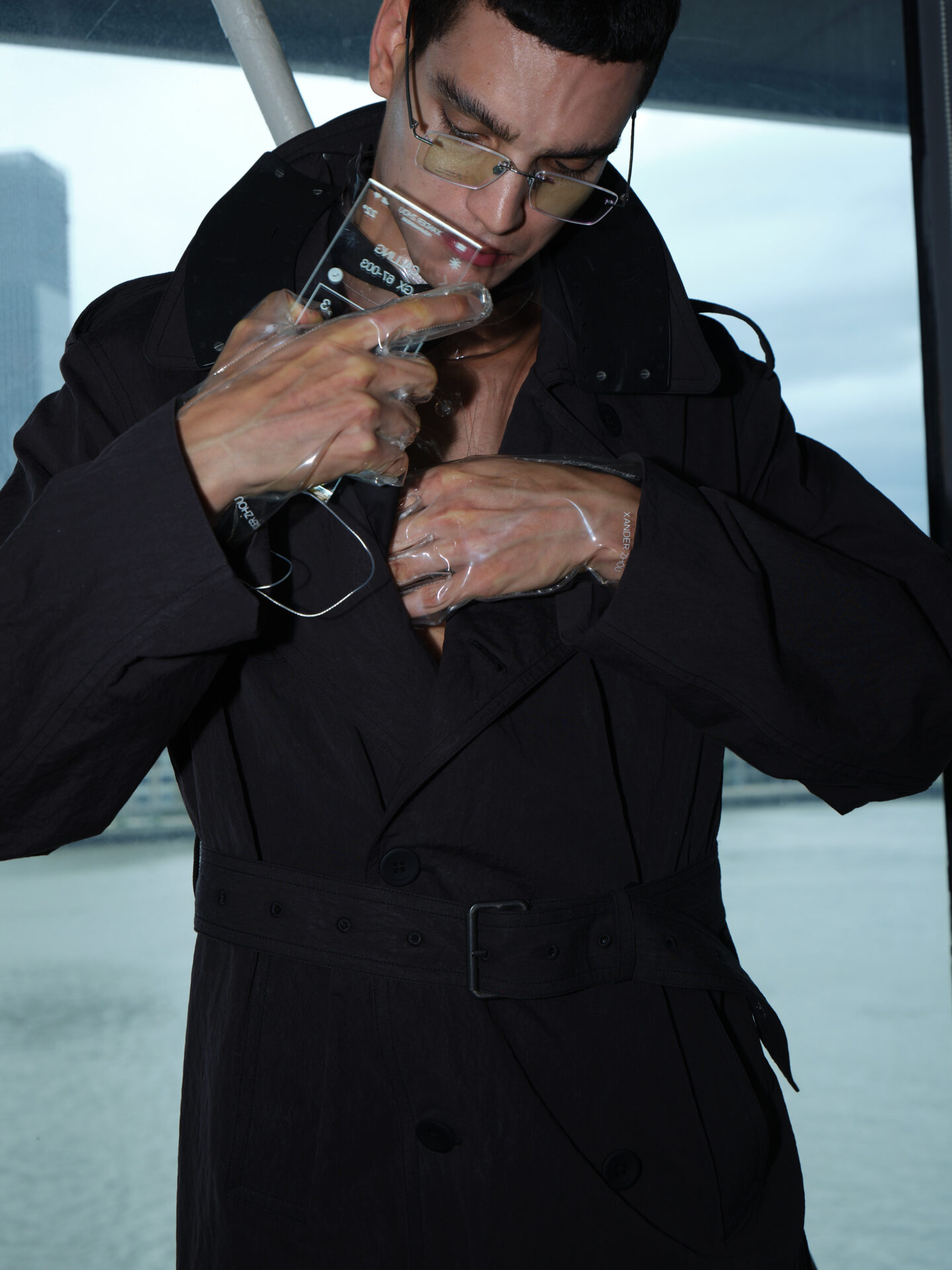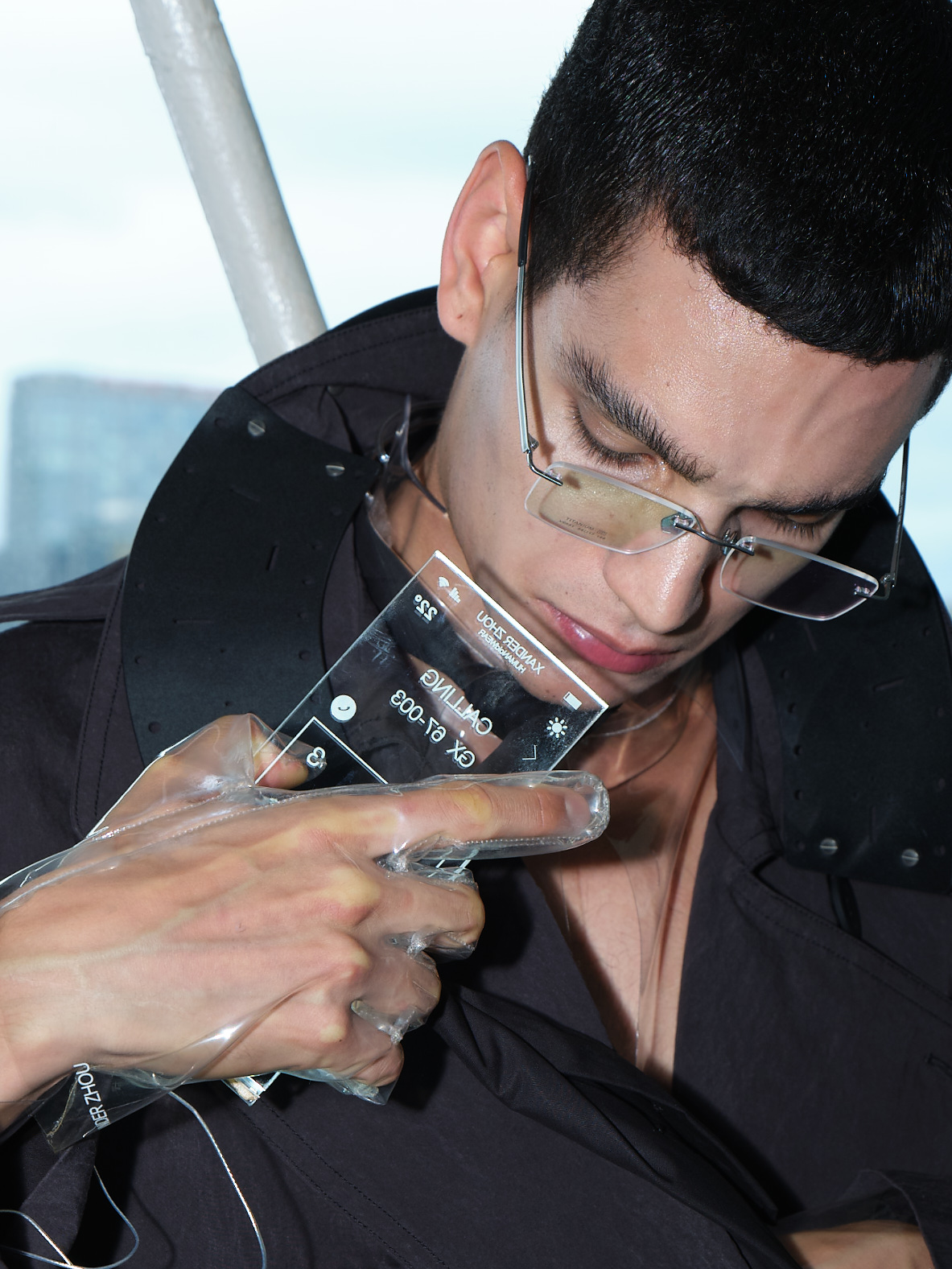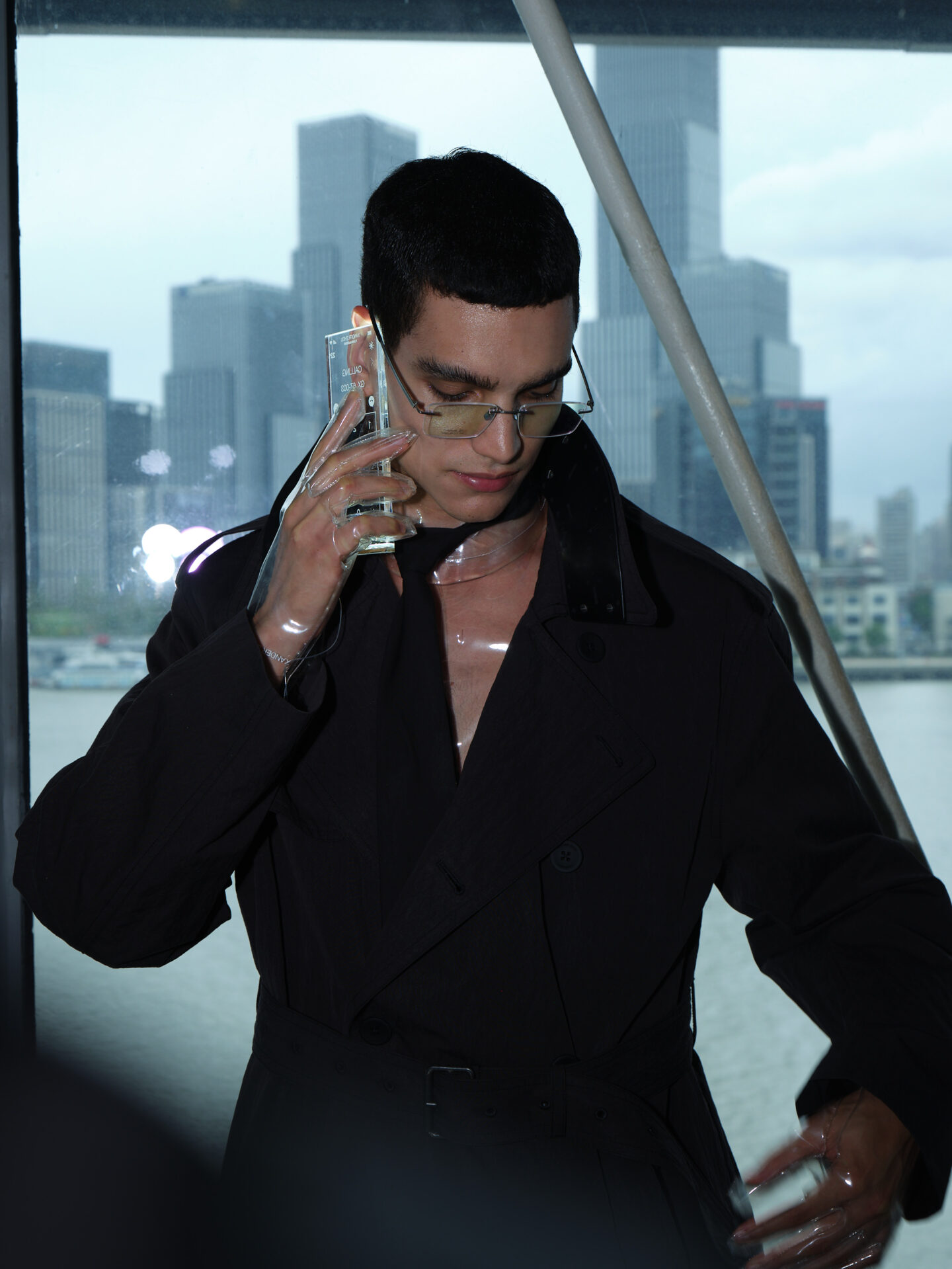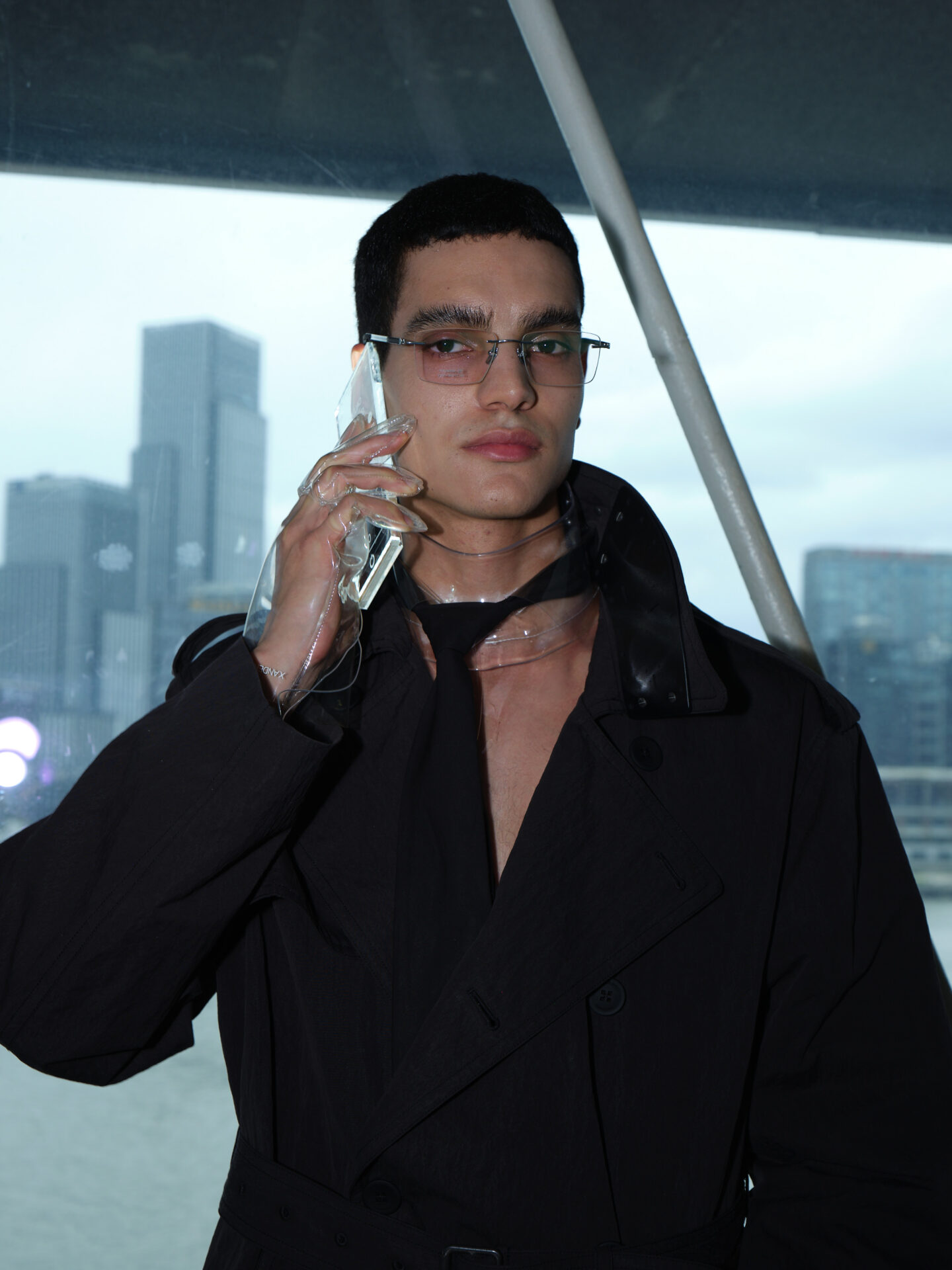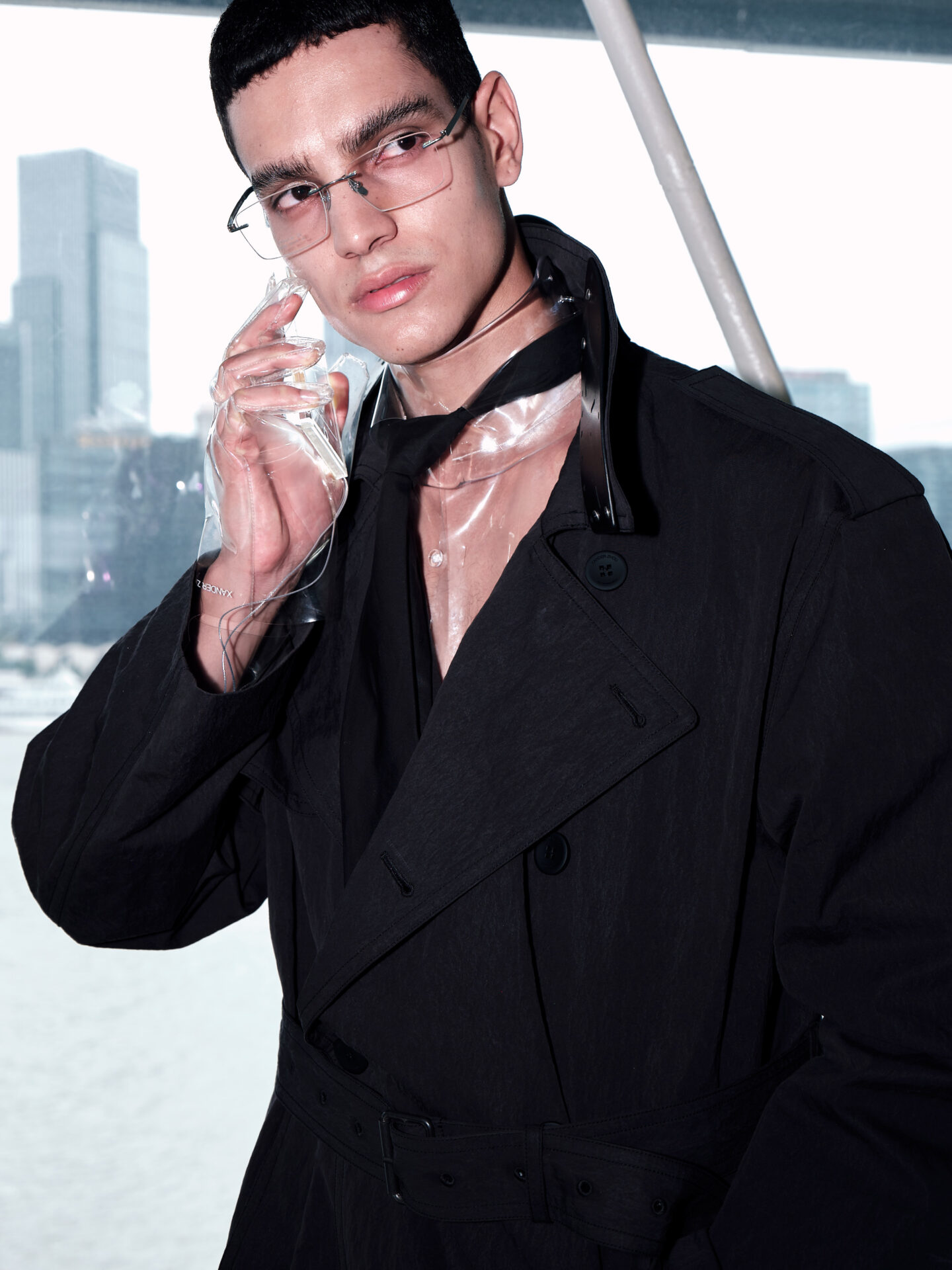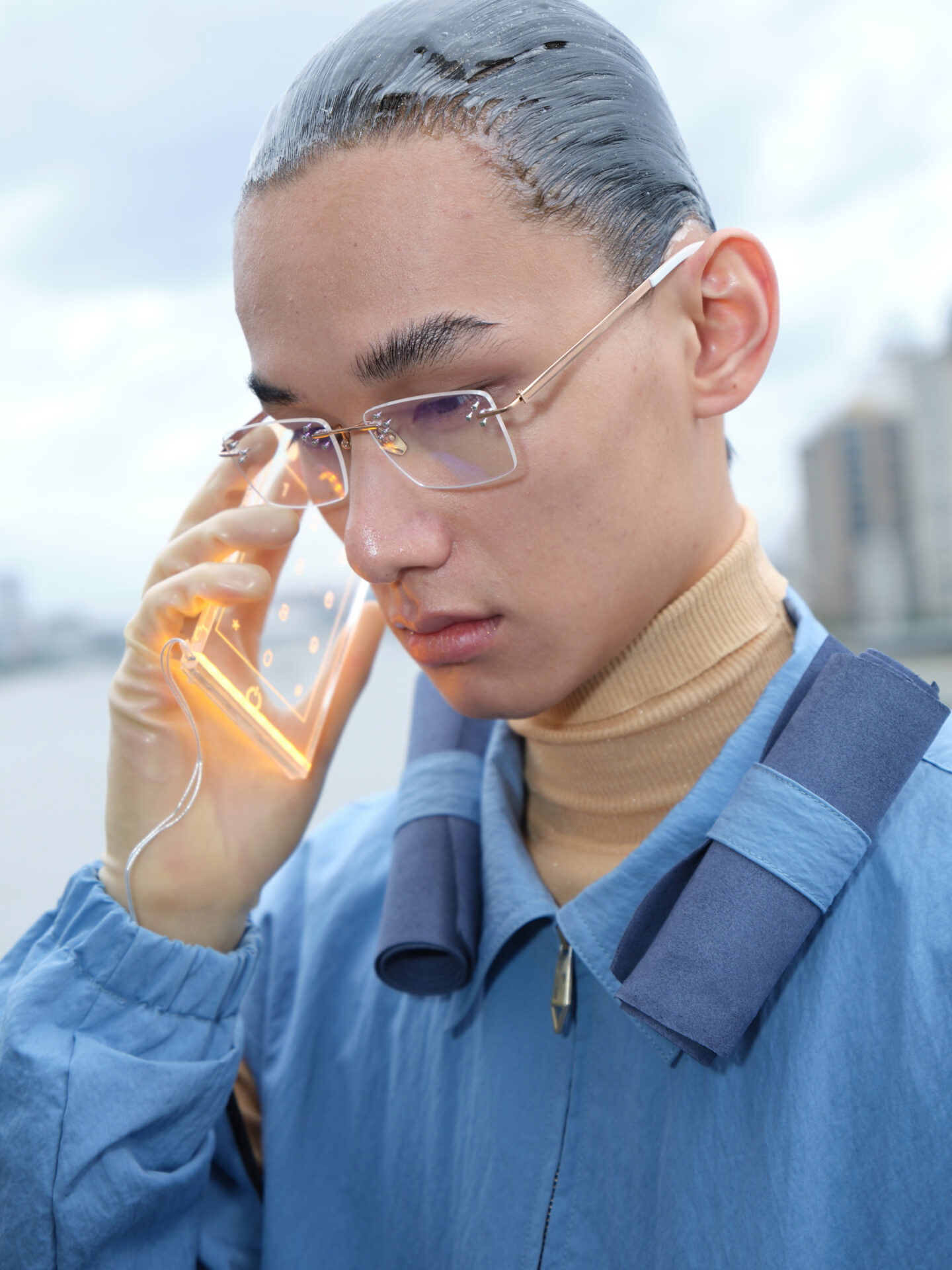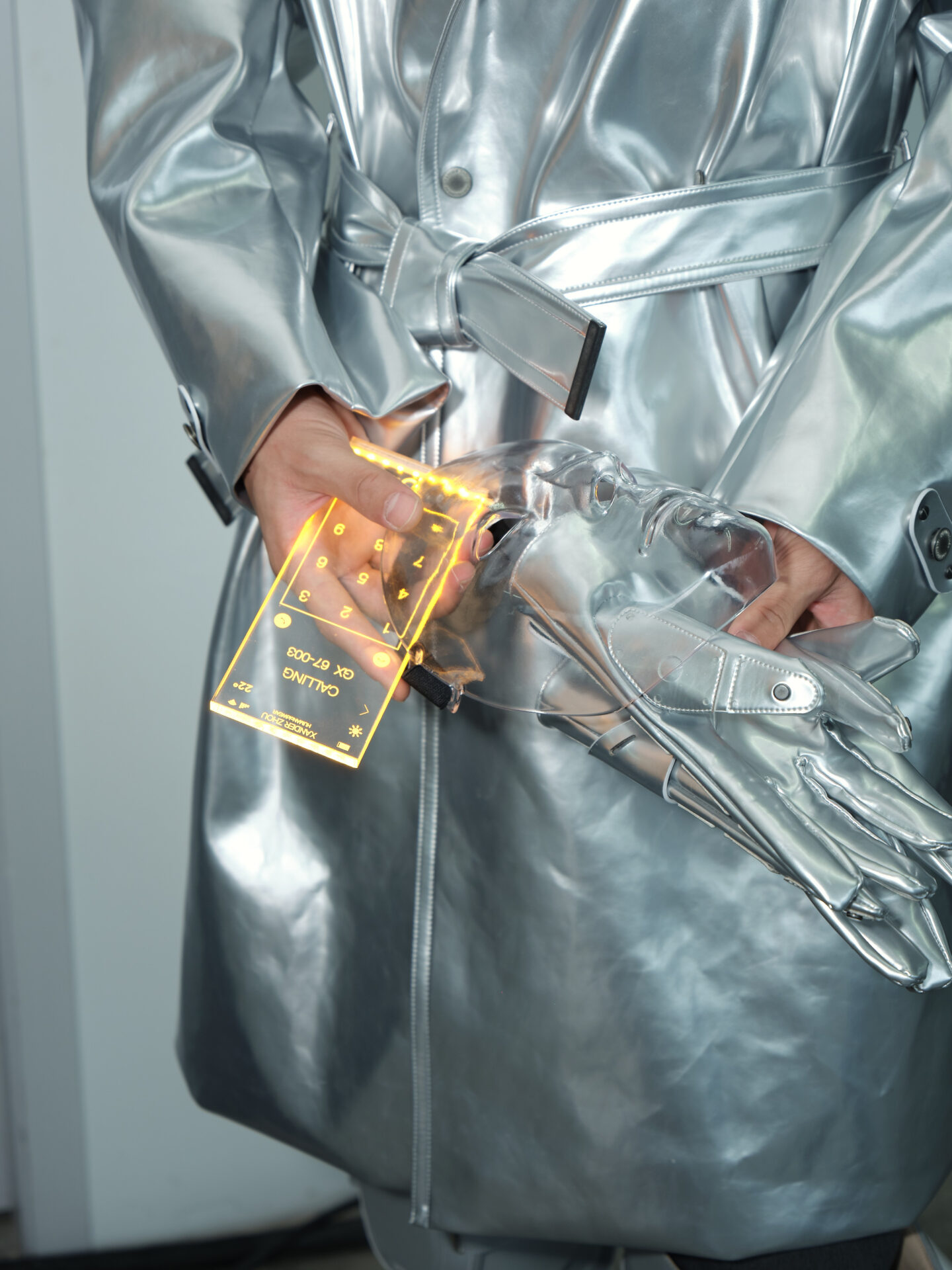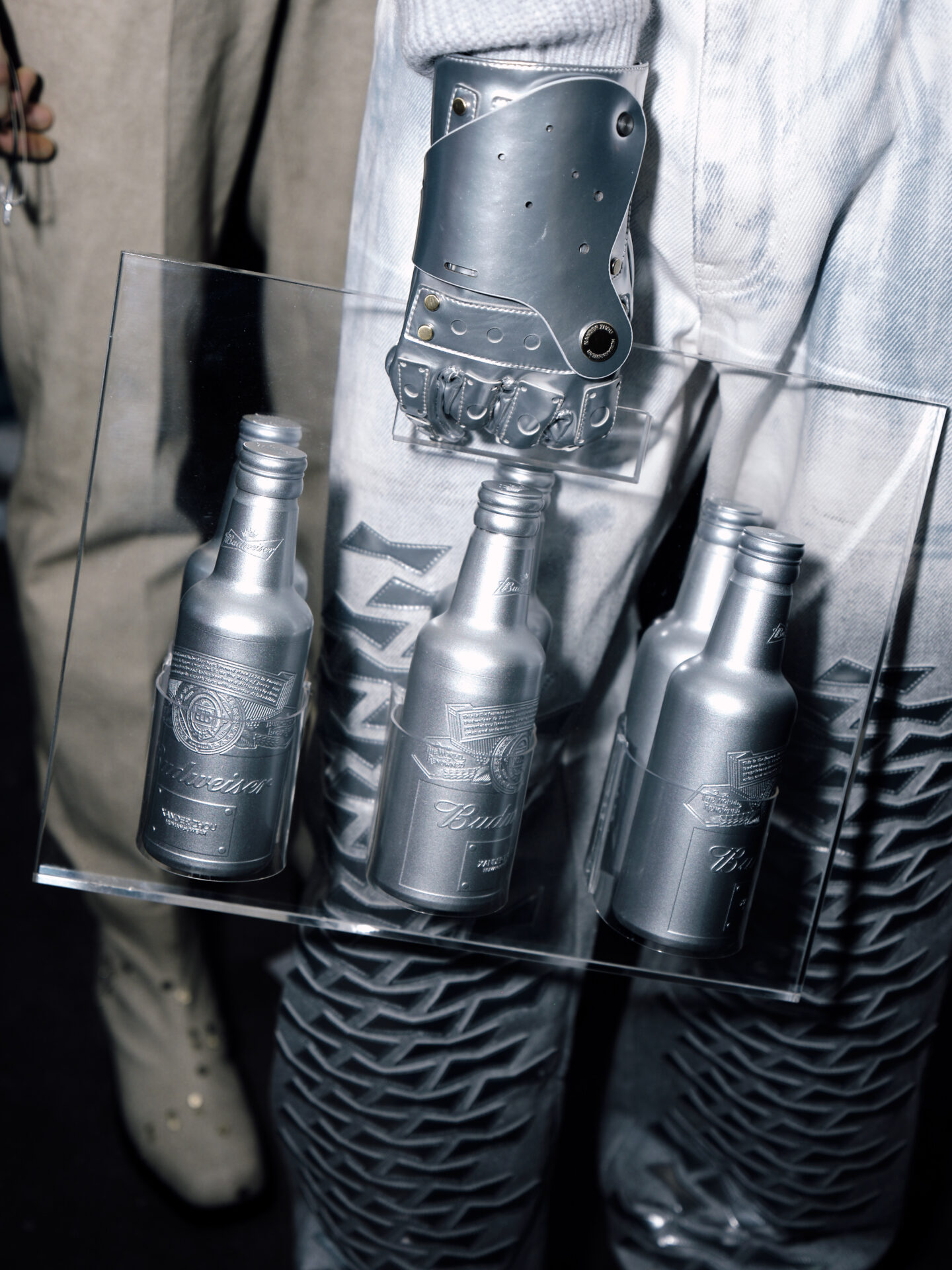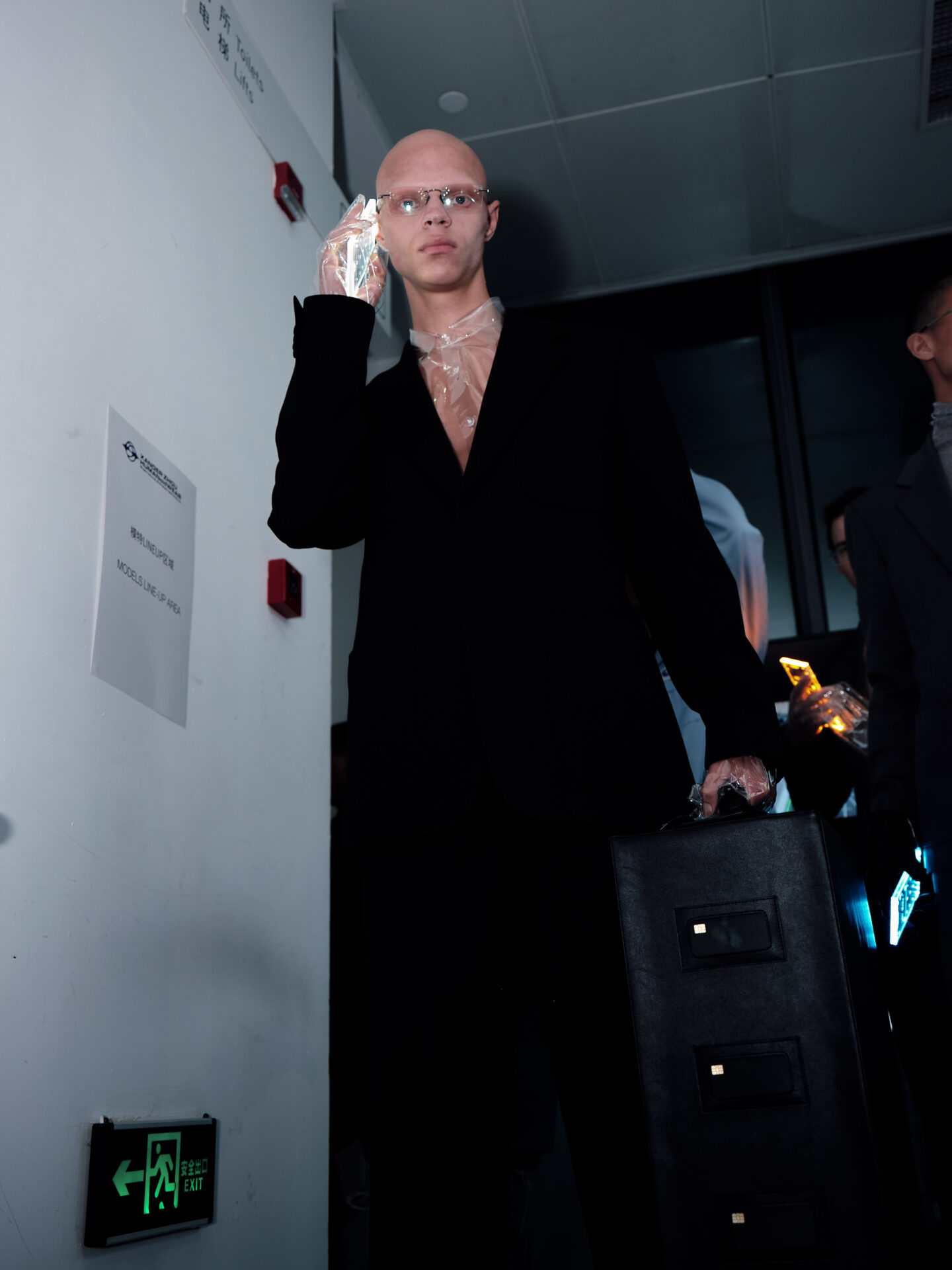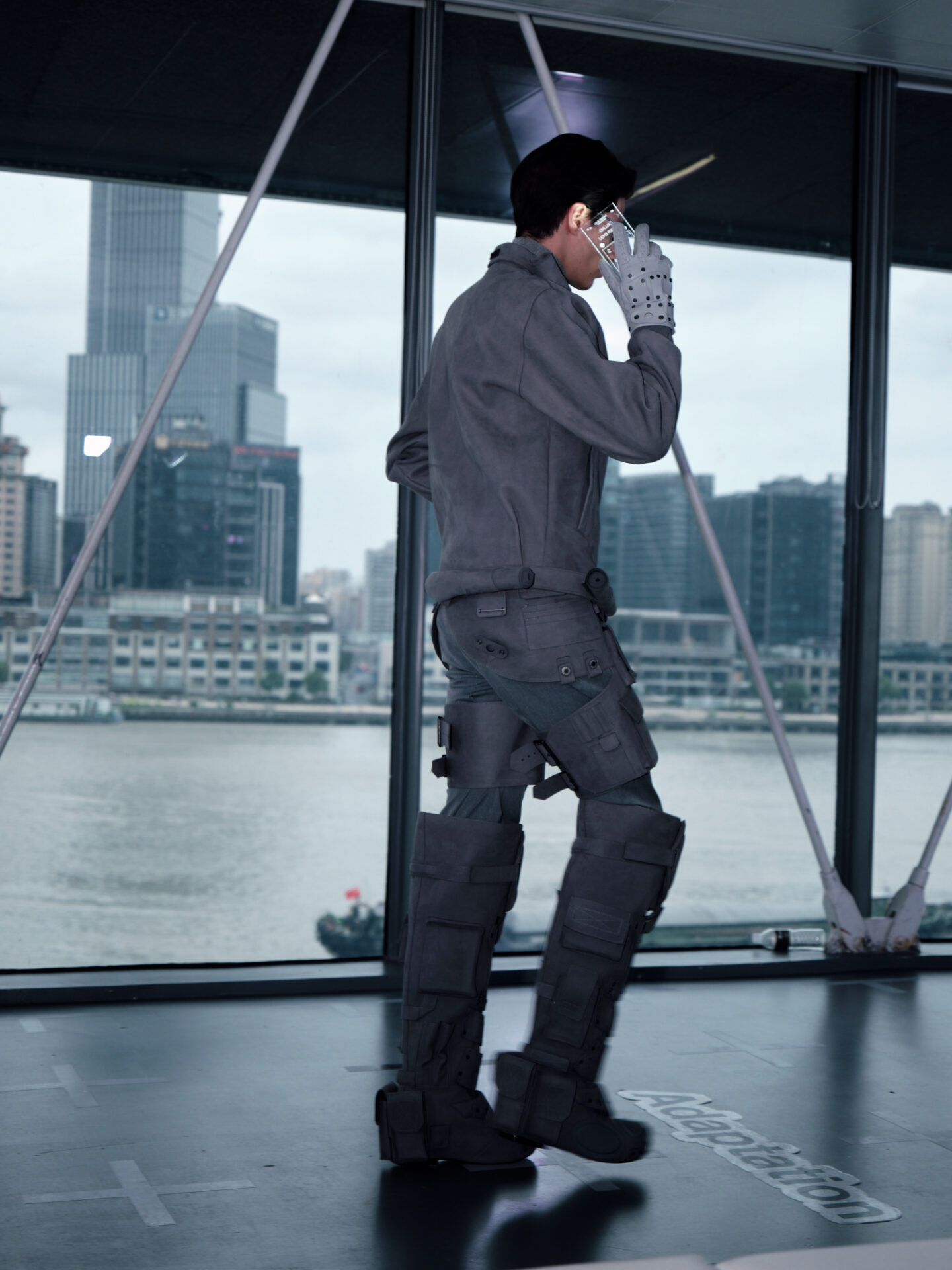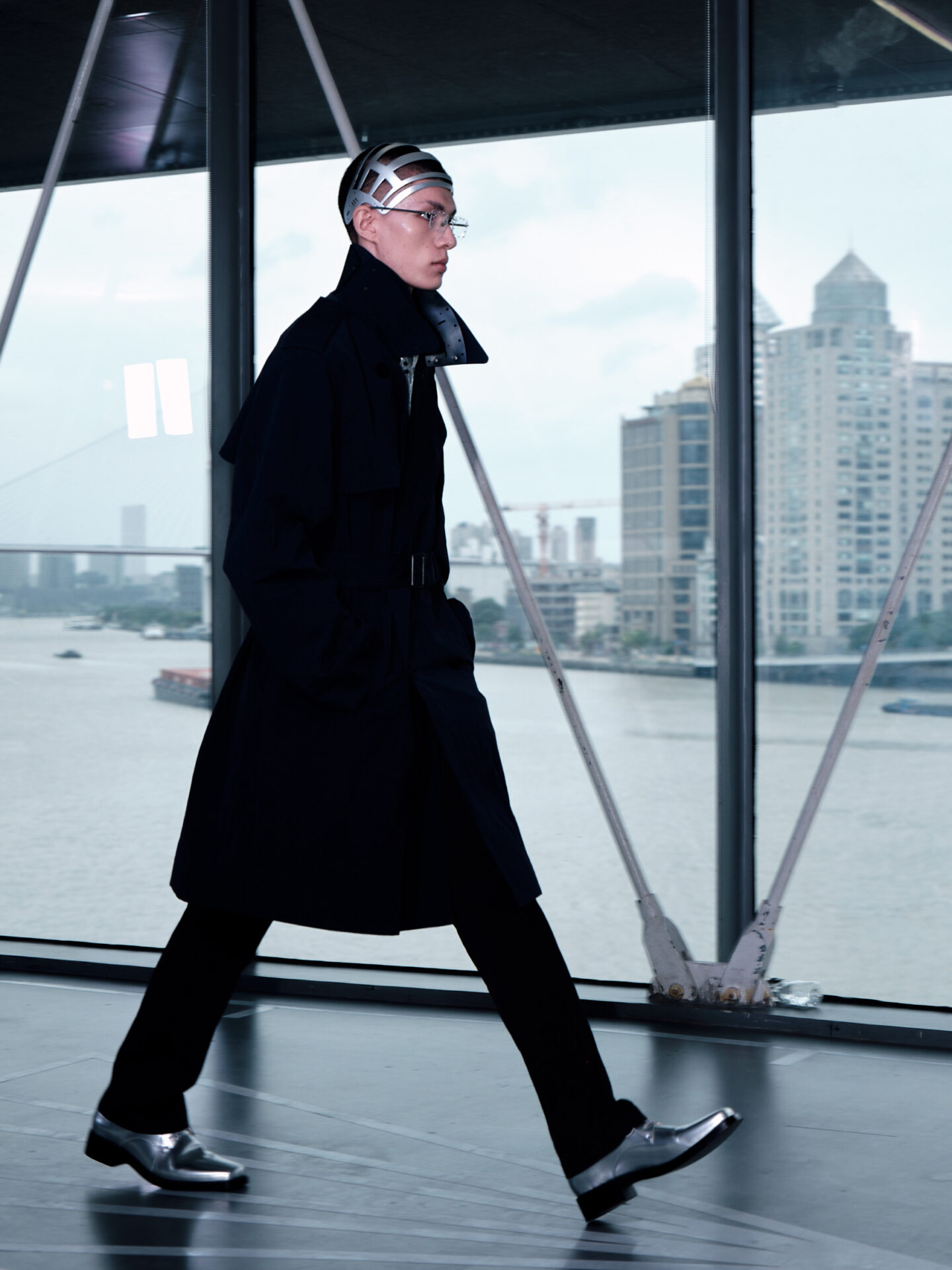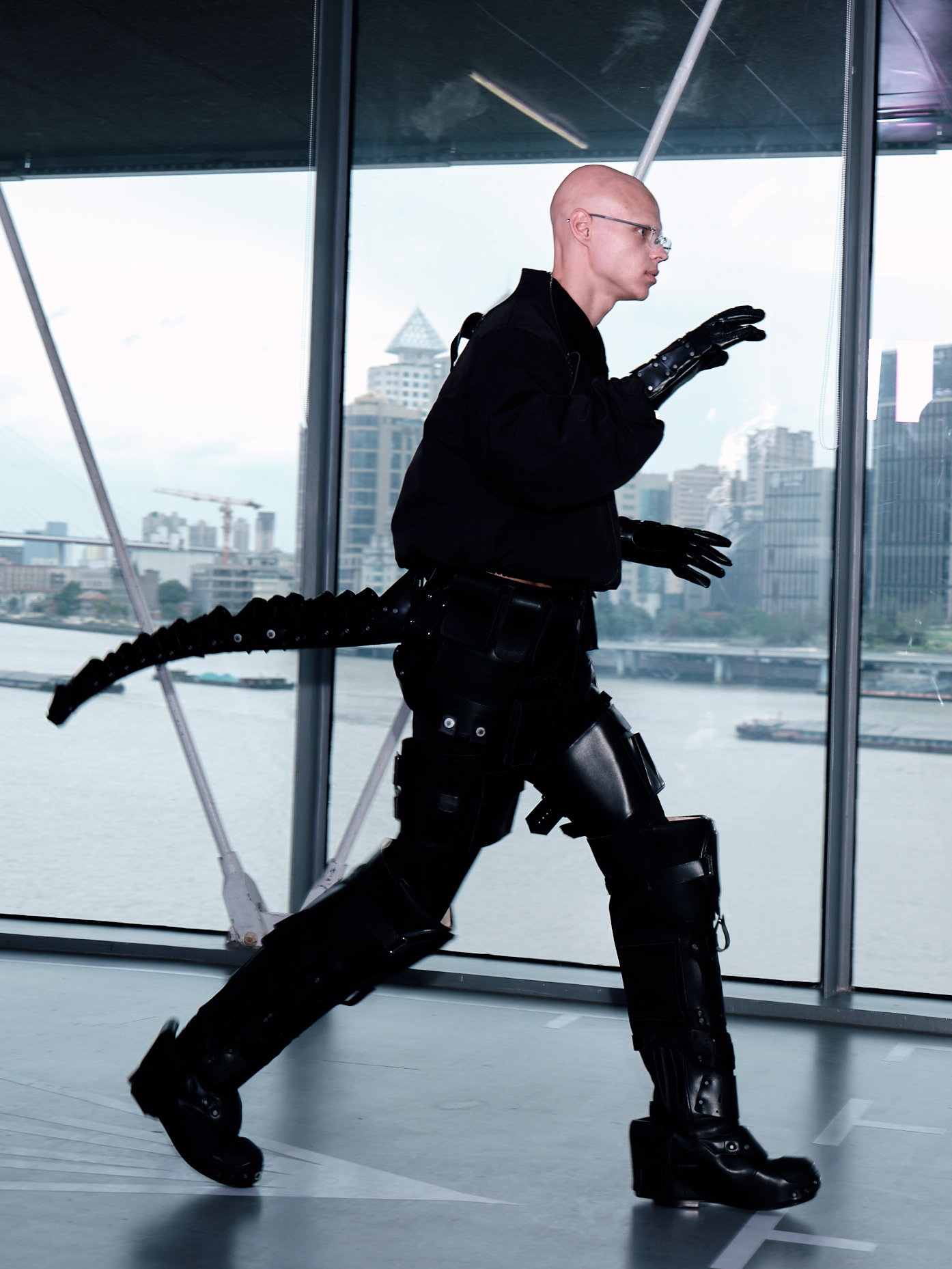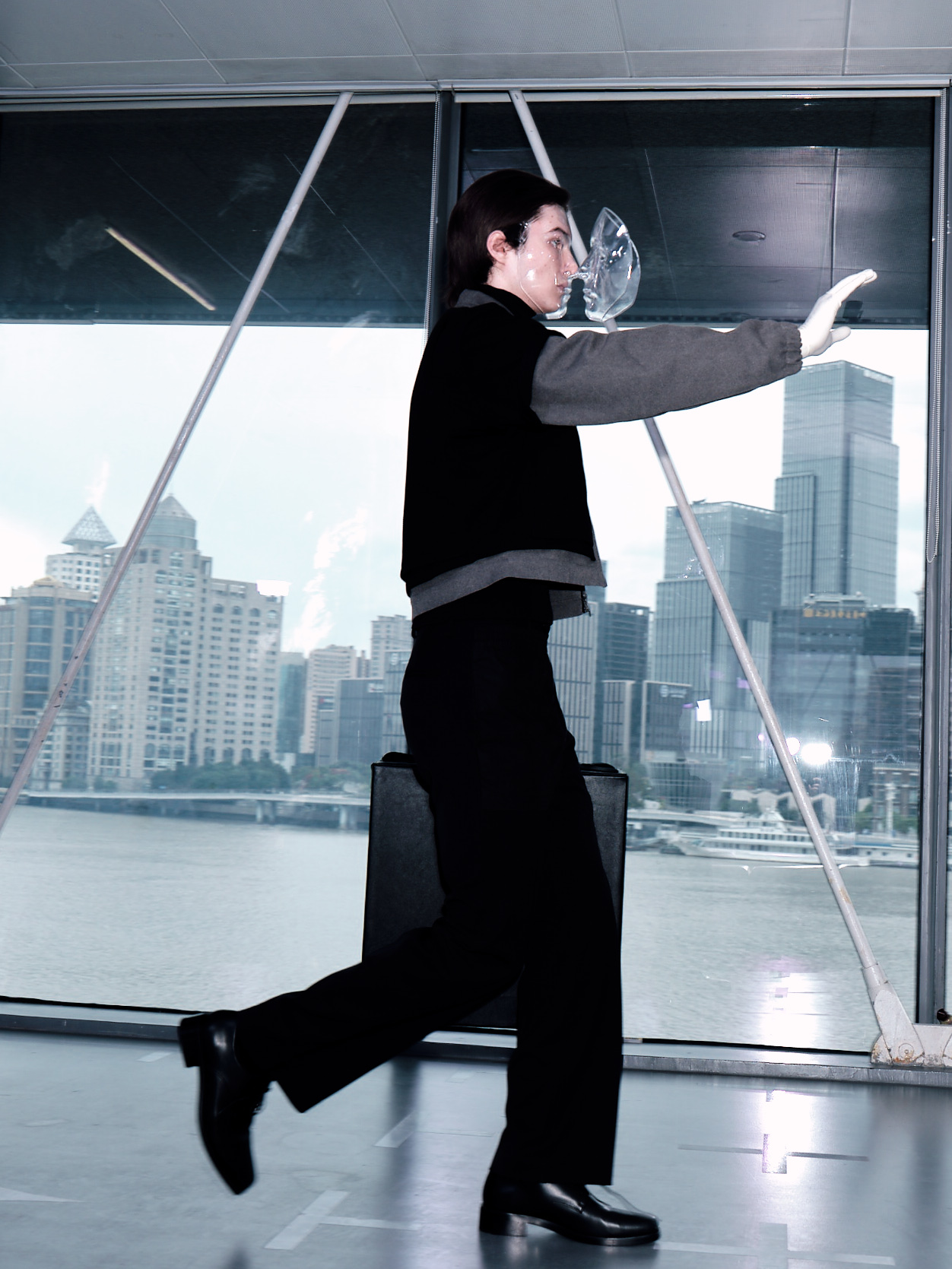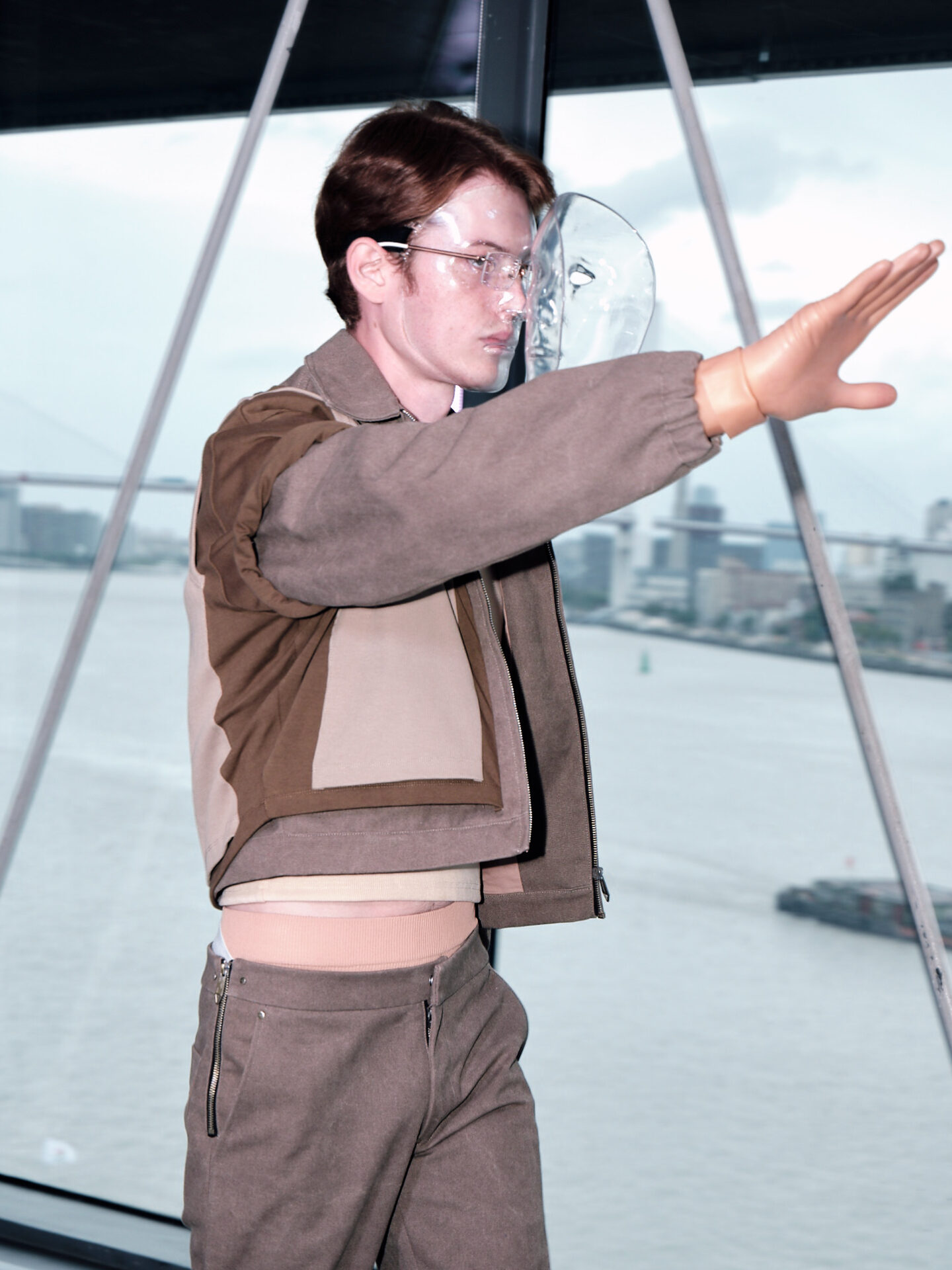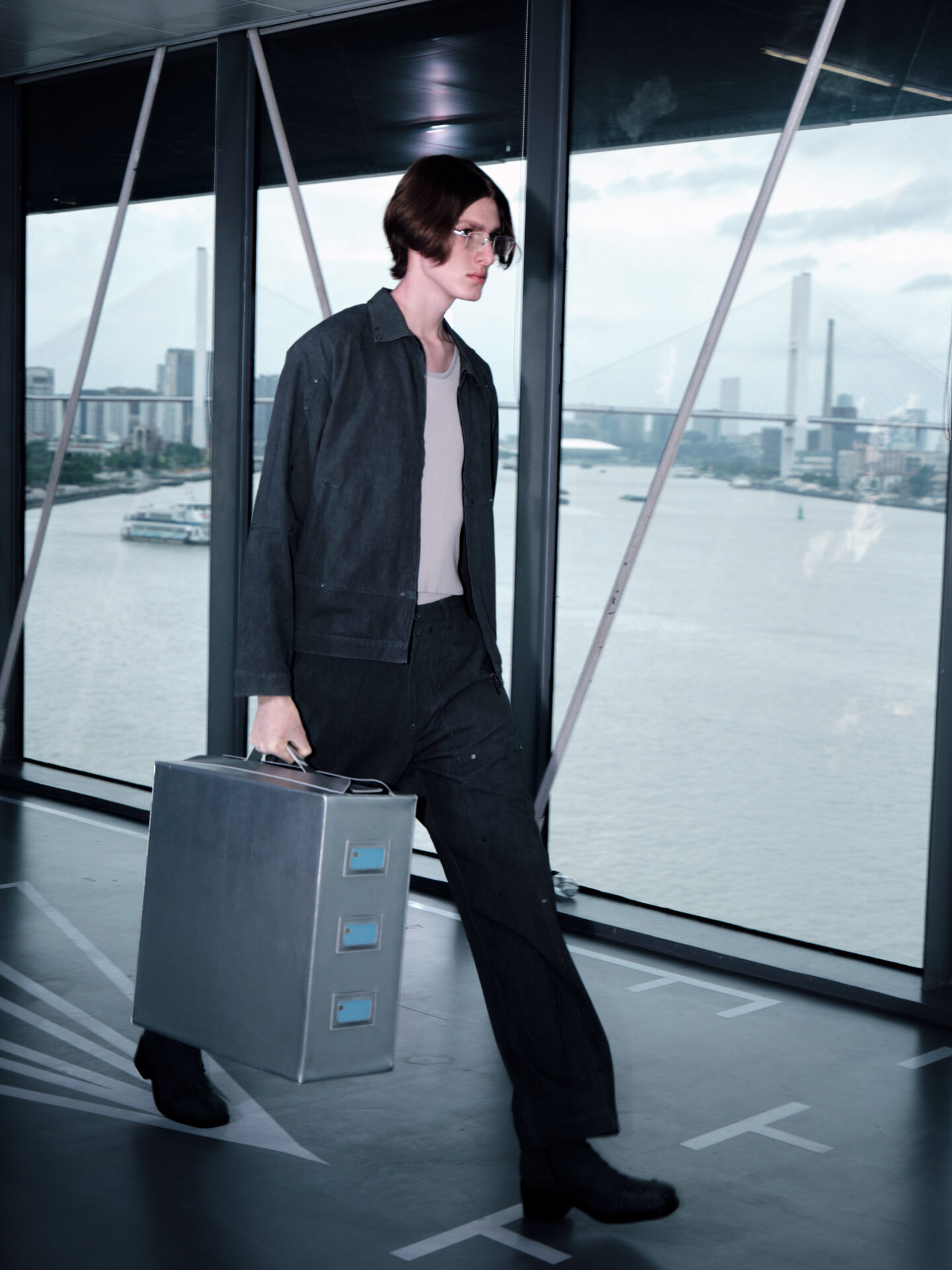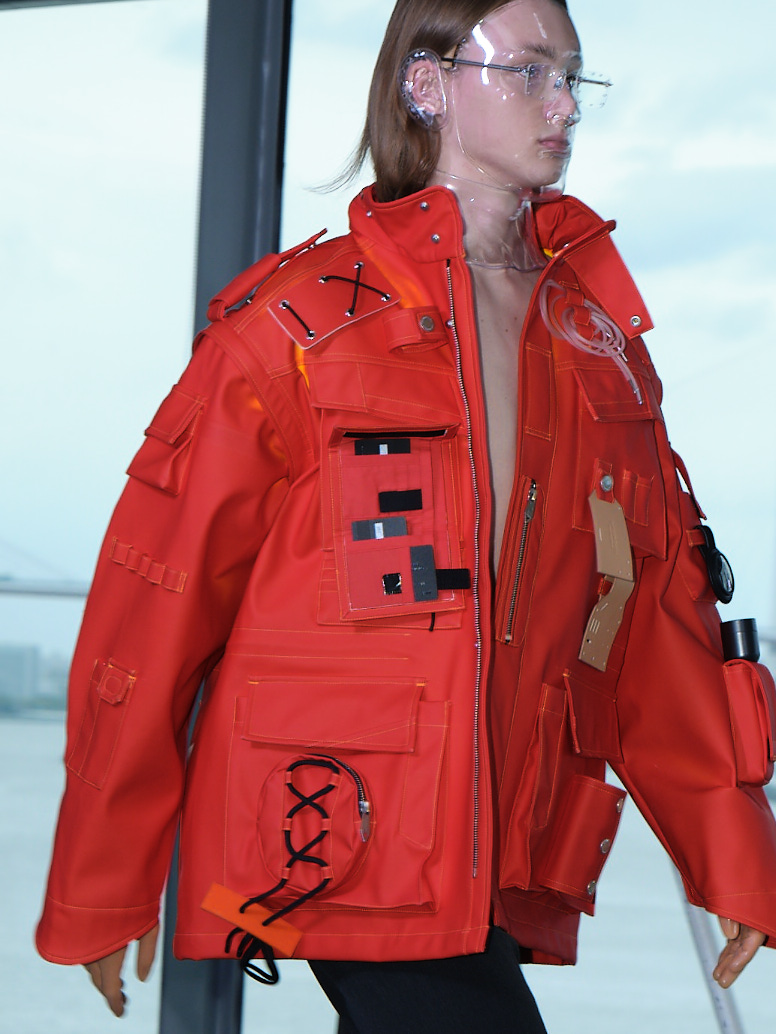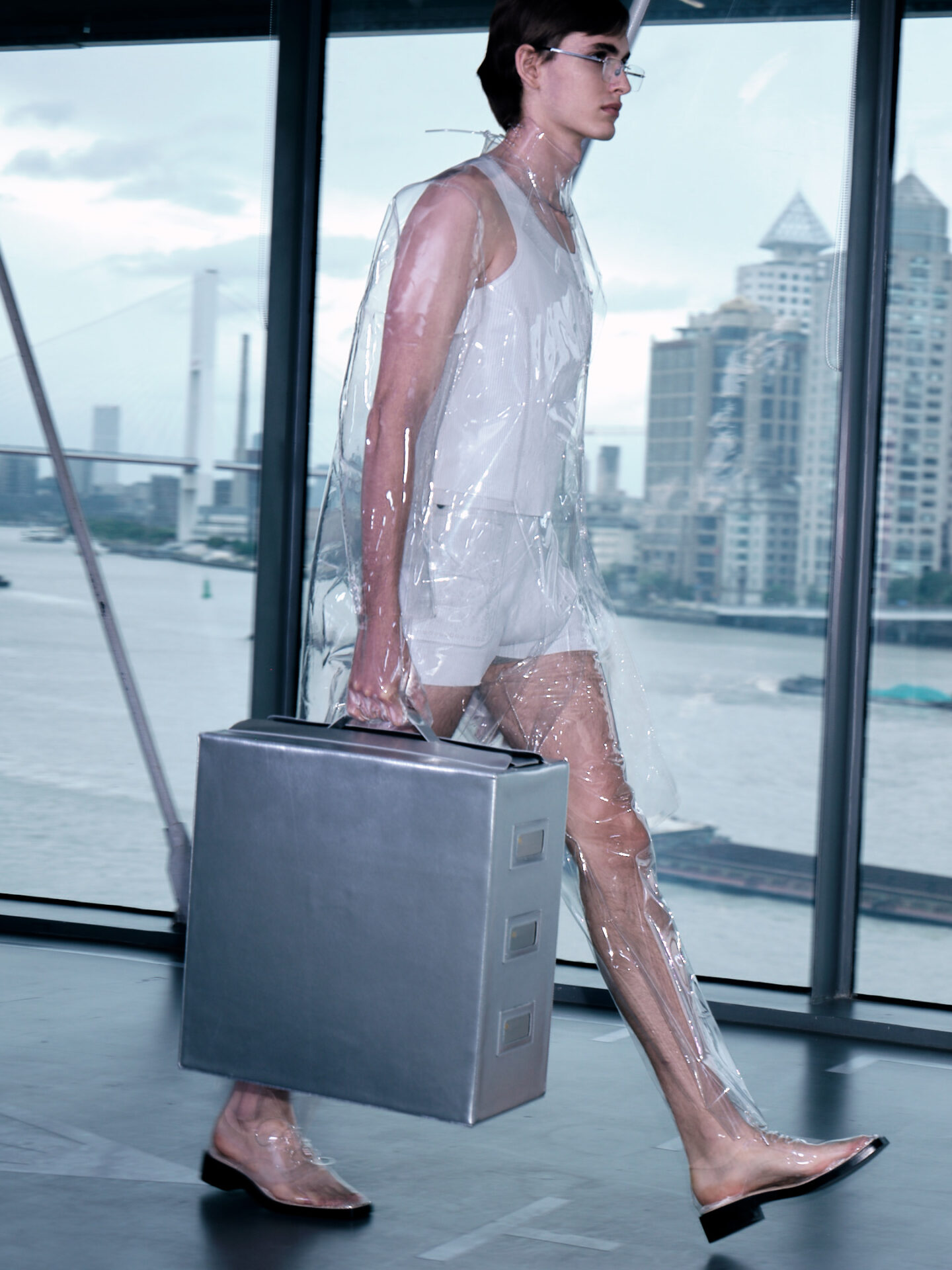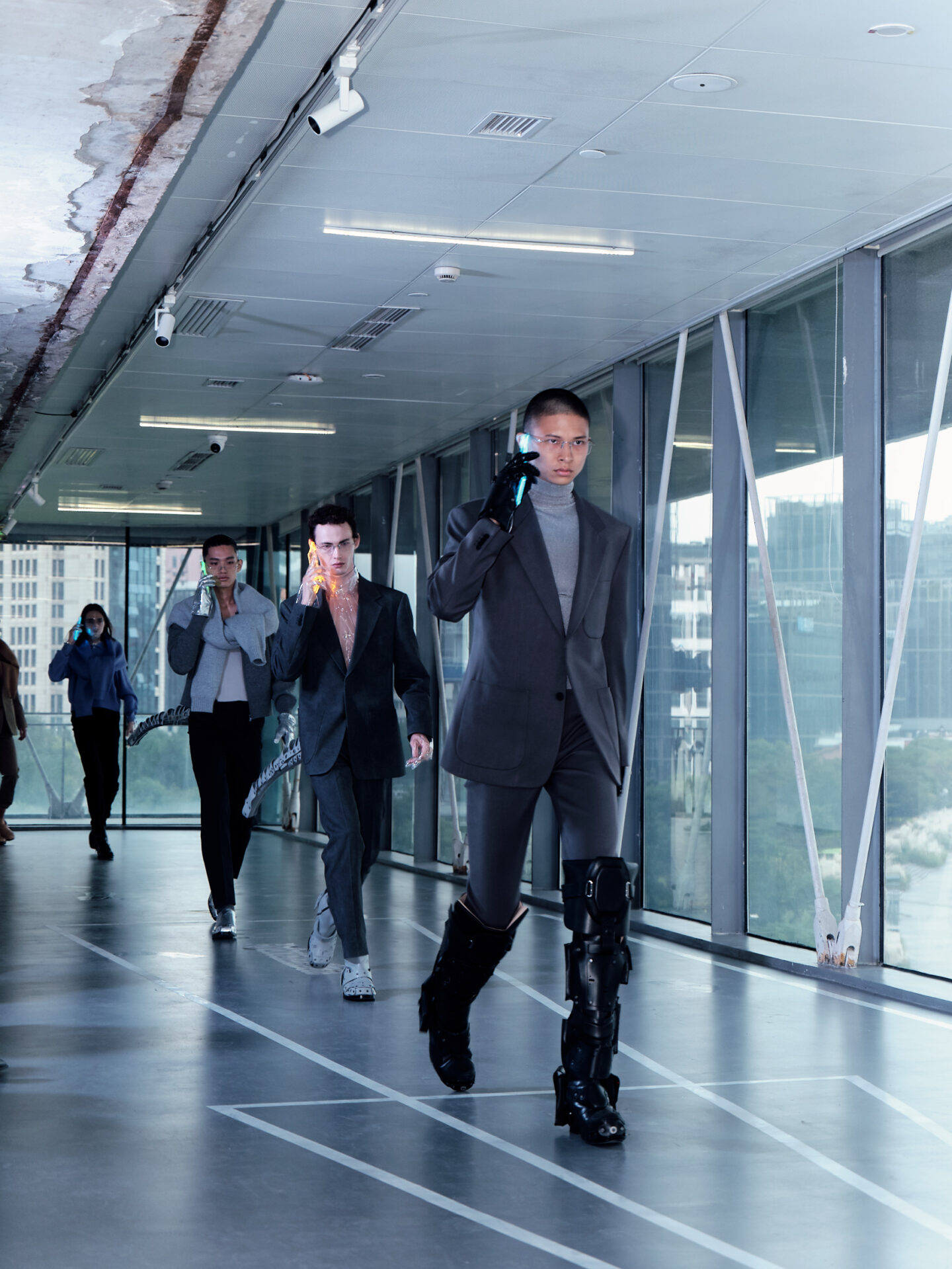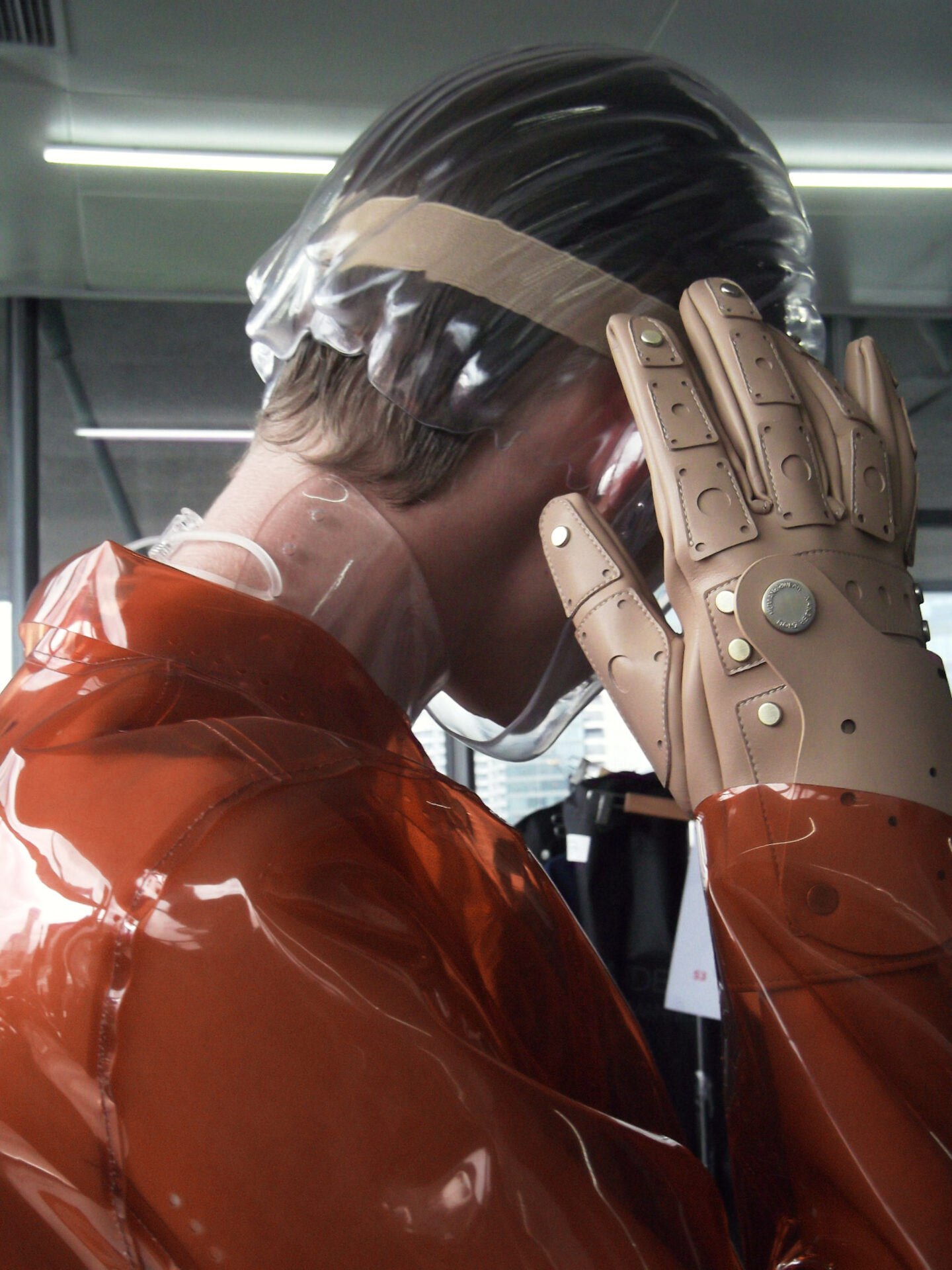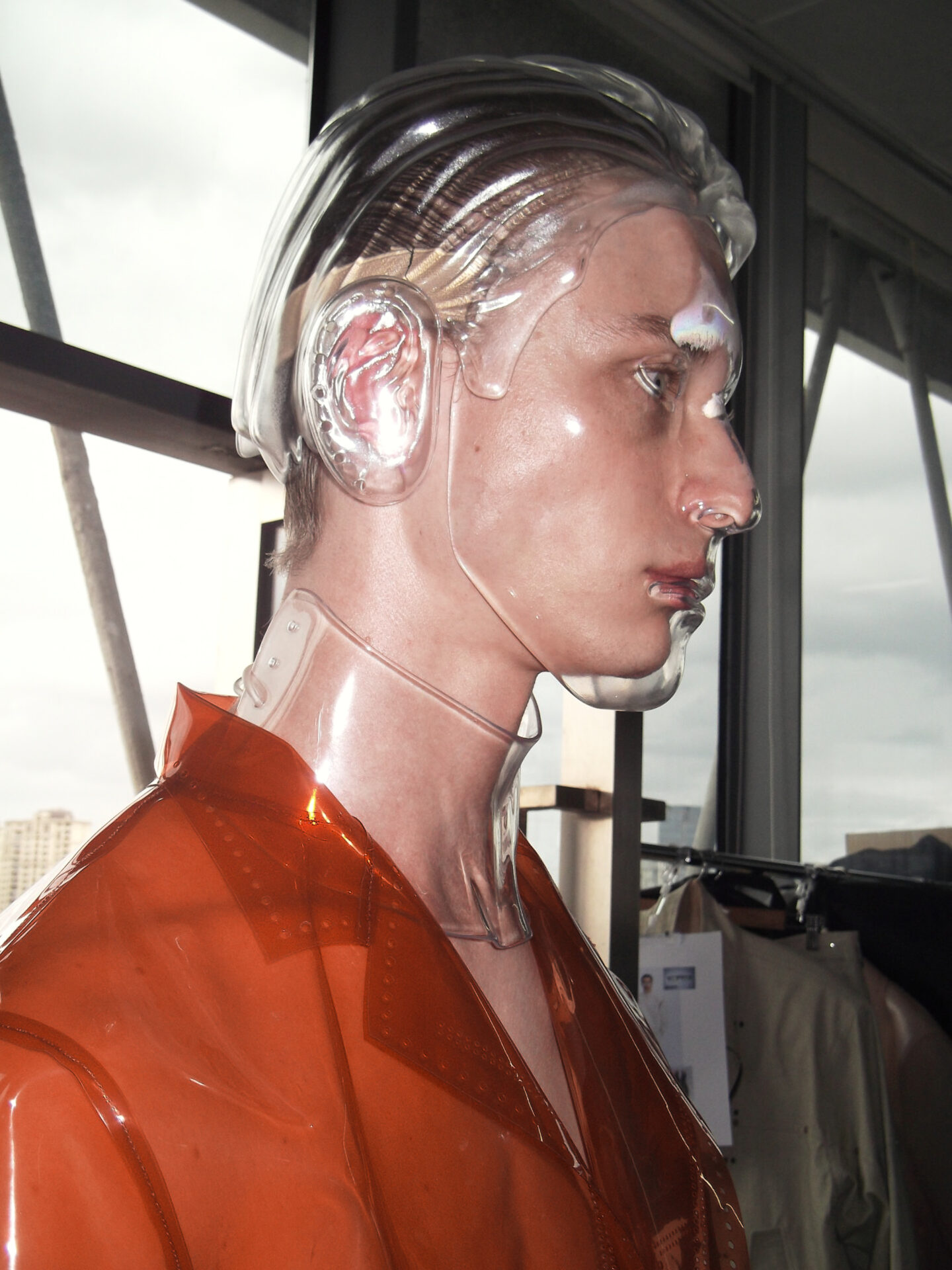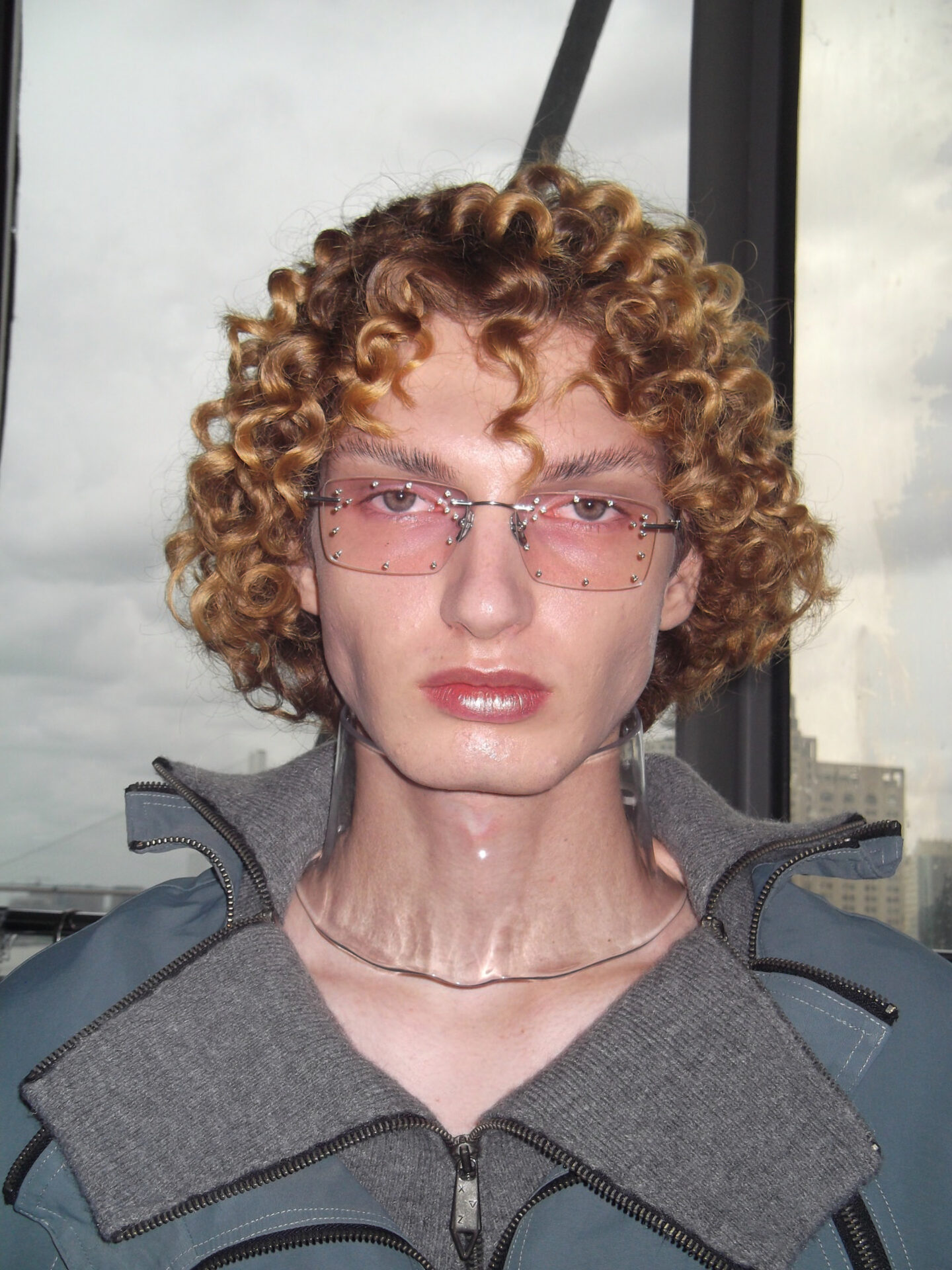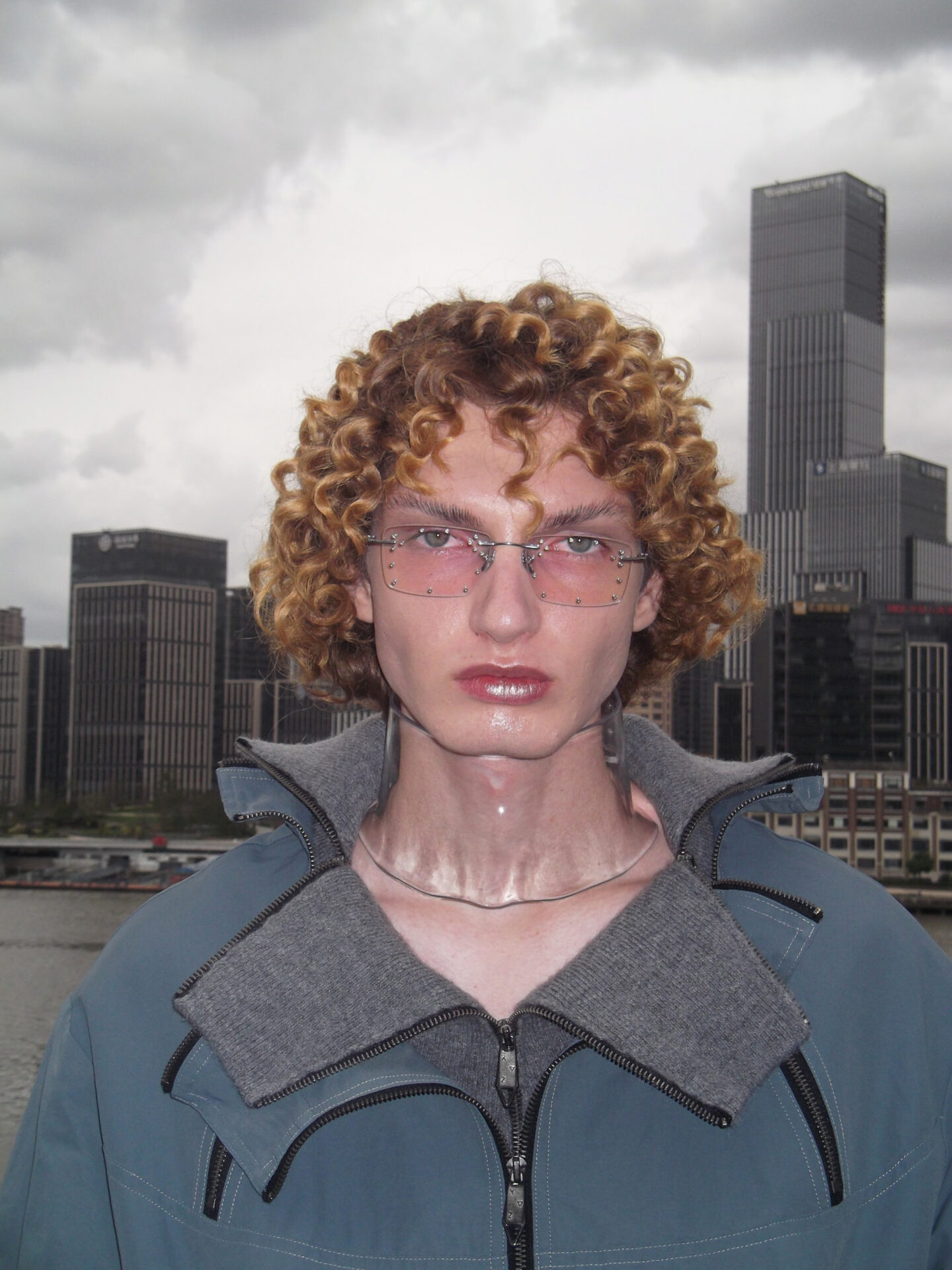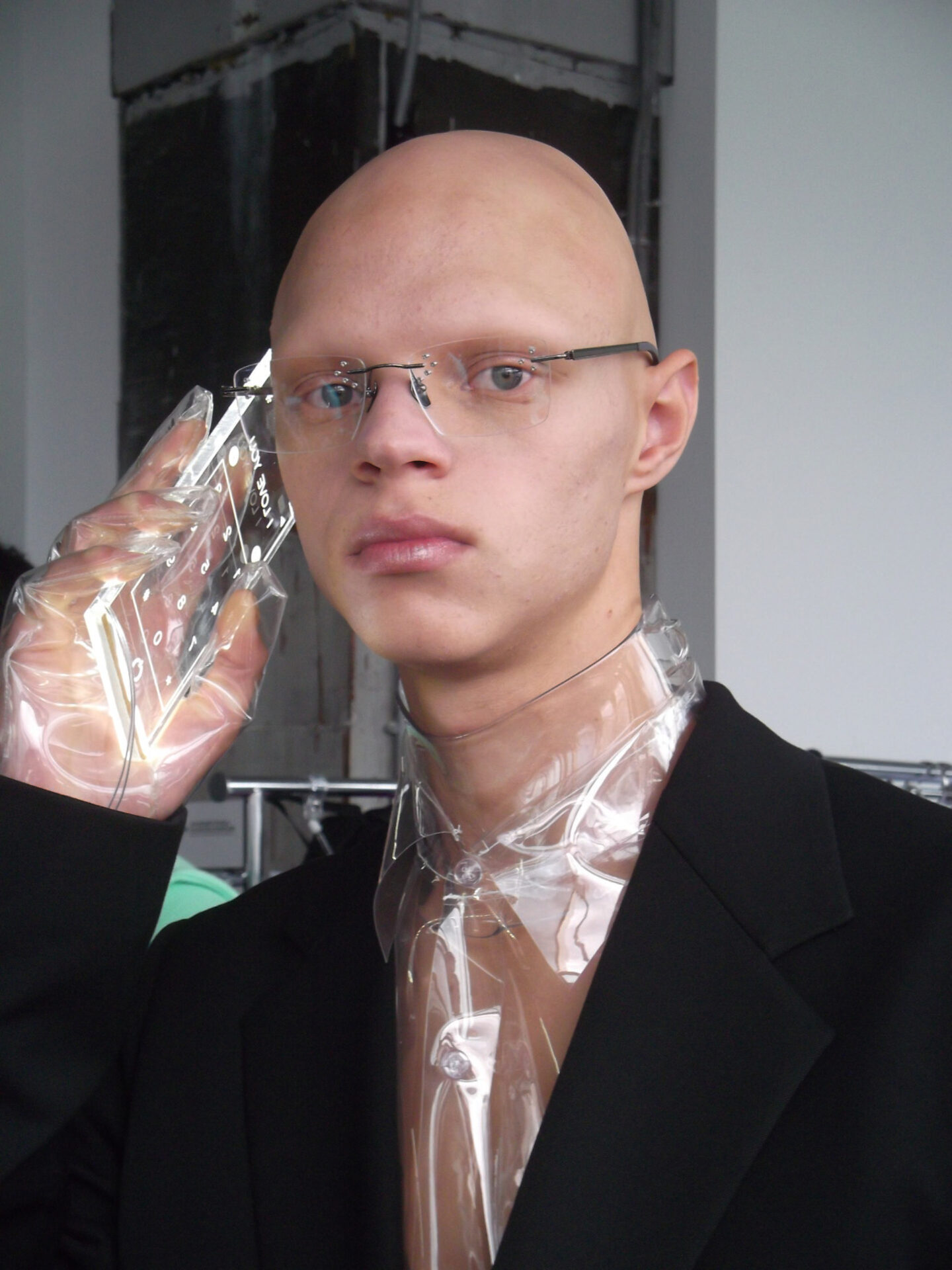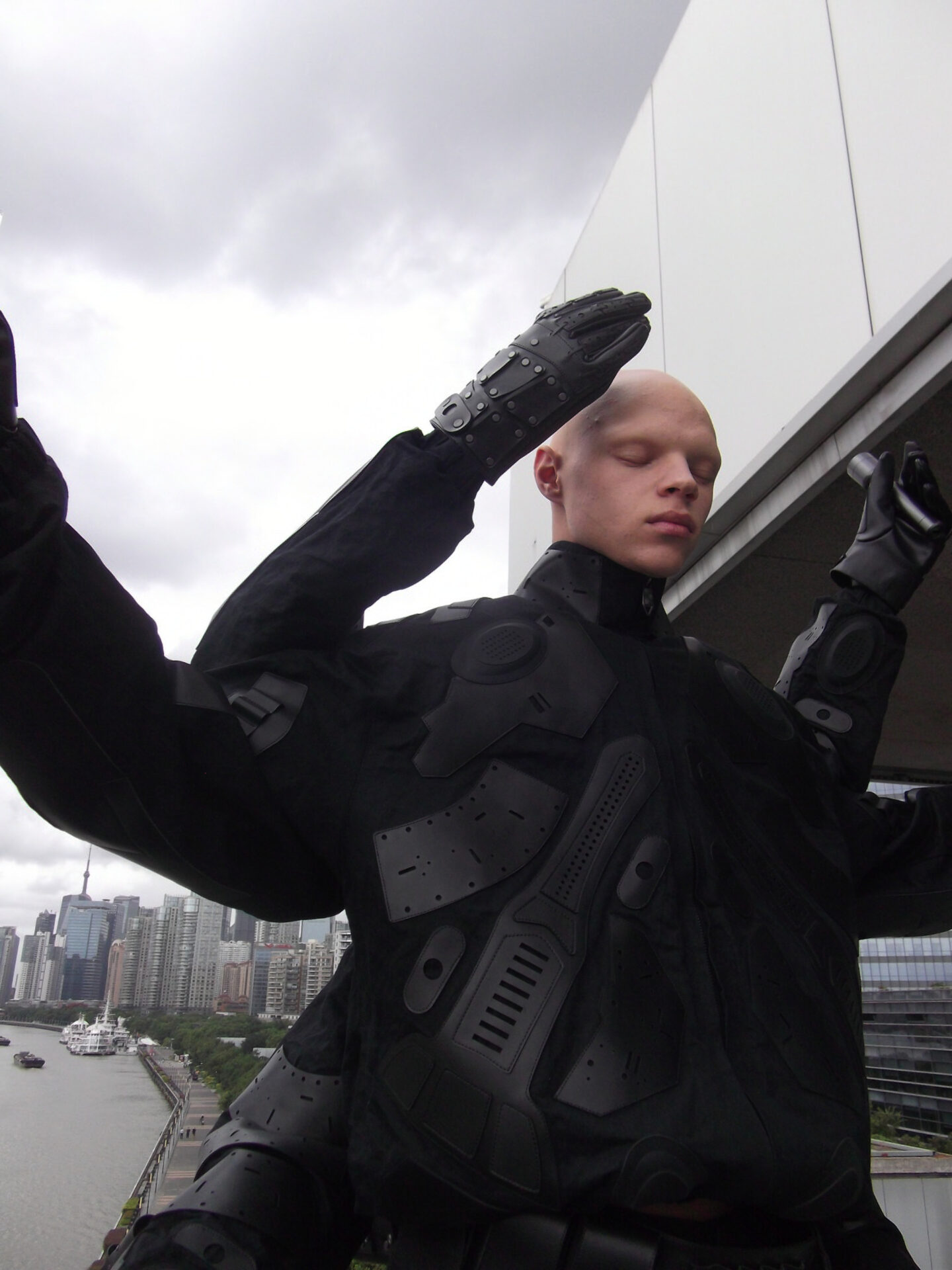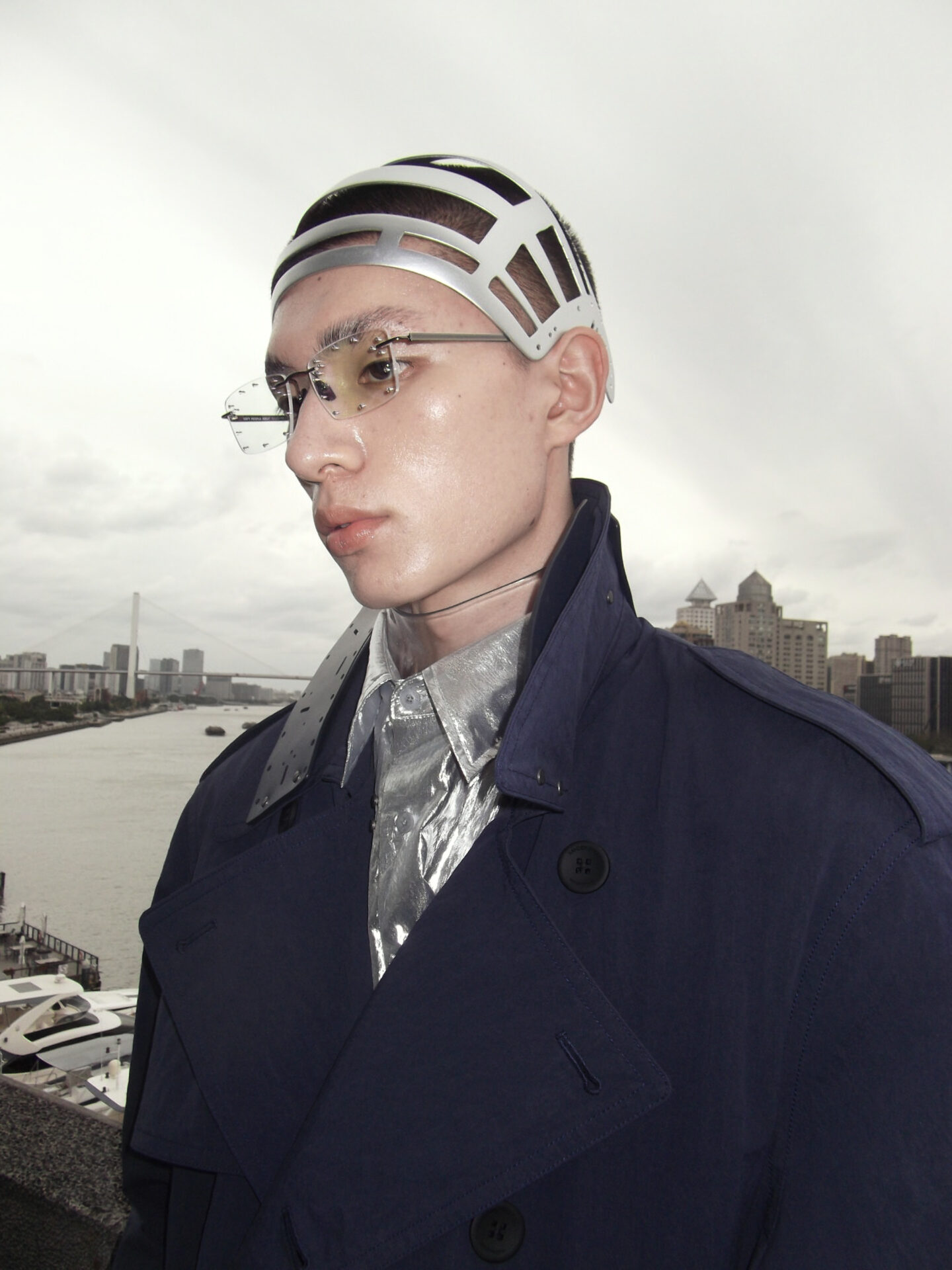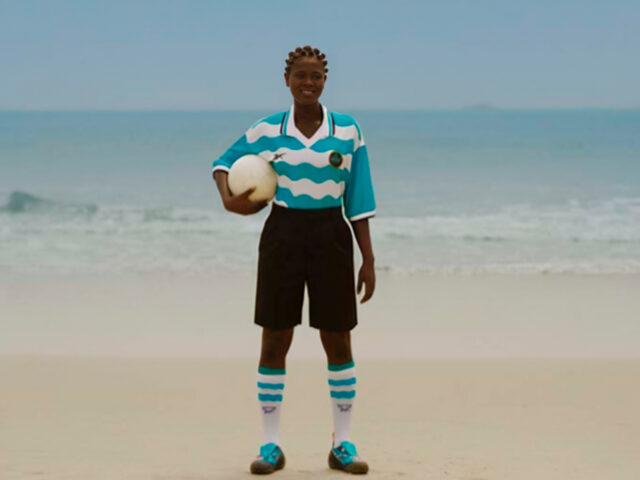In 1993, Vernor Vinge delivered a speech entitled “The Coming Technological Singularity: How to Survive in the Posthuman Age”. Looking at the historical trajectory of technological advances, he noted the accelerating pace of their progress and theorized that humanity was approaching a turning point that could transcend existing technologies and even human civilization itself; namely, the emergence of superhuman intelligence. Today, Xander Zhou(@xanderzhou) takes Vinge’s theory and reflects on the human being of the future.
At the XANDER ZHOU SS24 & PRO A.I.VOLUTION Intergalactic Exhibition, researchers, analysts, archivists and investigators from various galaxies take a close look at humans, humanoids and non-human entities, imagining a future of harmonious coexistence between various species. In this future, superhuman intelligence is the only one capable of surviving in the new world. A new order of natural selection, anti-nature.
Trans-species sapiens machines, dressed in knitted garments and carrying briefcases, approach a semblance of humans. Thanks to this, their existence is hidden in plain sight. However, at the base of their spine they have developed multi-jointed mechanical tails reminiscent of those of ancient reptiles. This anatomical feature helps them to maintain their balance during rapid movements. The scales provide protection, reflect sunlight and help regulate body temperature.
The mechanical tail designs mark the debut of the XANDER ZHOU PRO series, a collection focused primarily on the research and development of the symbiotic relationship between intelligence and human creation, as well as the artificial interaction between mechanical and manual craftsmanship. The evolution of human beings and intelligent entities could be a proof of divergent evolution, or perhaps a sample of convergent evolution.
This season, cross-species motifs are omnipresent: the six-petal collar of the jacket adopts the structure of plant sepals, while the degree of zipper closure varies with evolutionary progress; the rivets used to assemble airplane wings appear on the uniforms, uniting hopes for the future and aspirations toward a destination.
Finally, in response to the mixing of seasons and increasingly extreme weather changes, the designer introduced garments of different thicknesses and lengths within the same collection. From helmet visors to TPU footwear, the clothing forms a mobile space that serves as both a protective insulator and a transparent interface. Ribbed vests, shirts and jackets appear in reverse order, conducting a self-examination through layered transparency in the face of arrival.
How will the increasingly intimate interaction between man and machine affect our sense of identity? Xander Zhou poses this question in this collection that imagines an ever-closer dystopian future.
For more Spring/Summer 2024 collections, click here.
Sigue toda la información de HIGHXTAR desde Facebook, Twitter o Instagram
You may also like...
